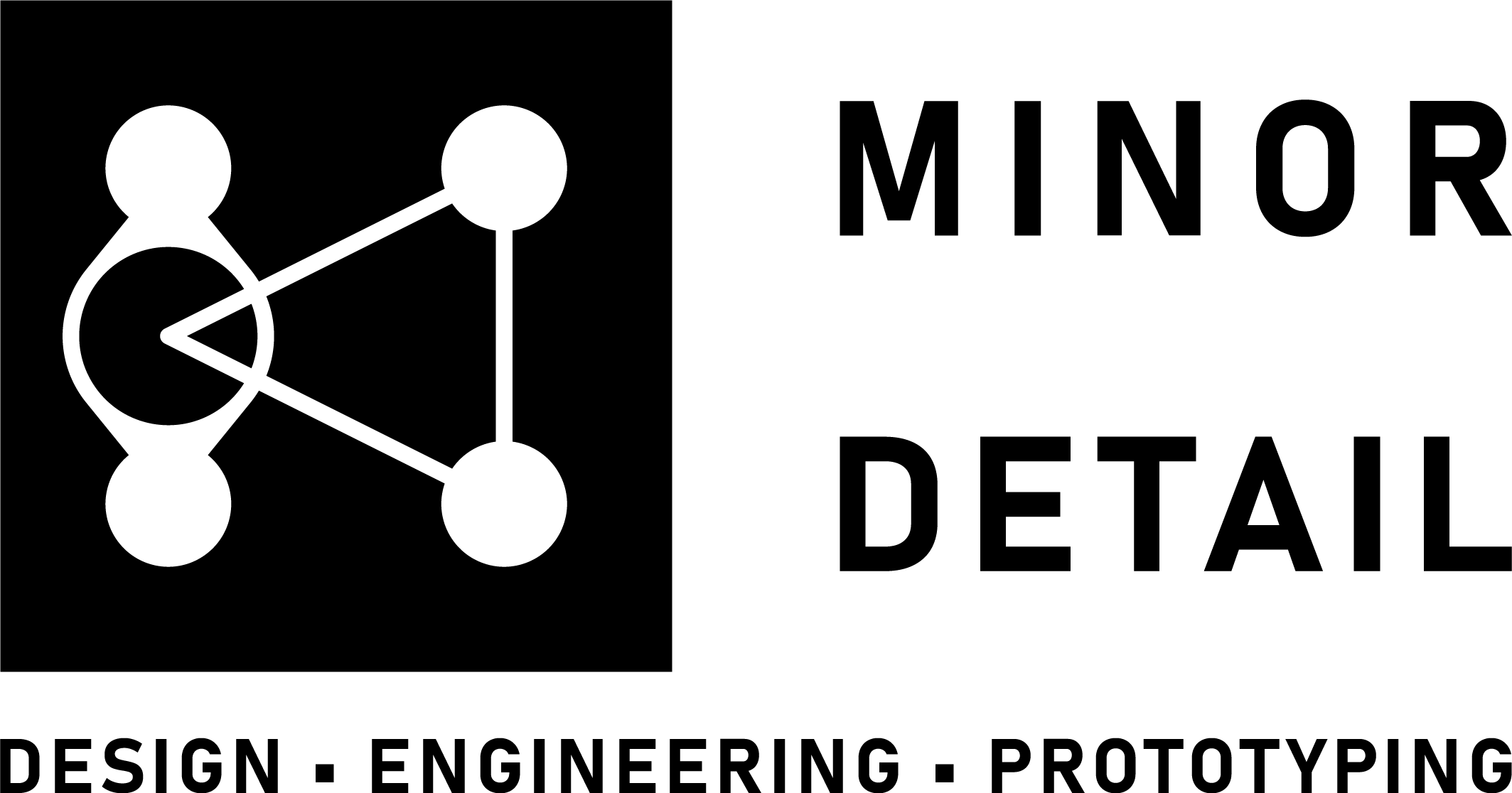PROJECT GALLERY
To commission a project, contact us here
Selection of recent work for scientific and precision machining projects
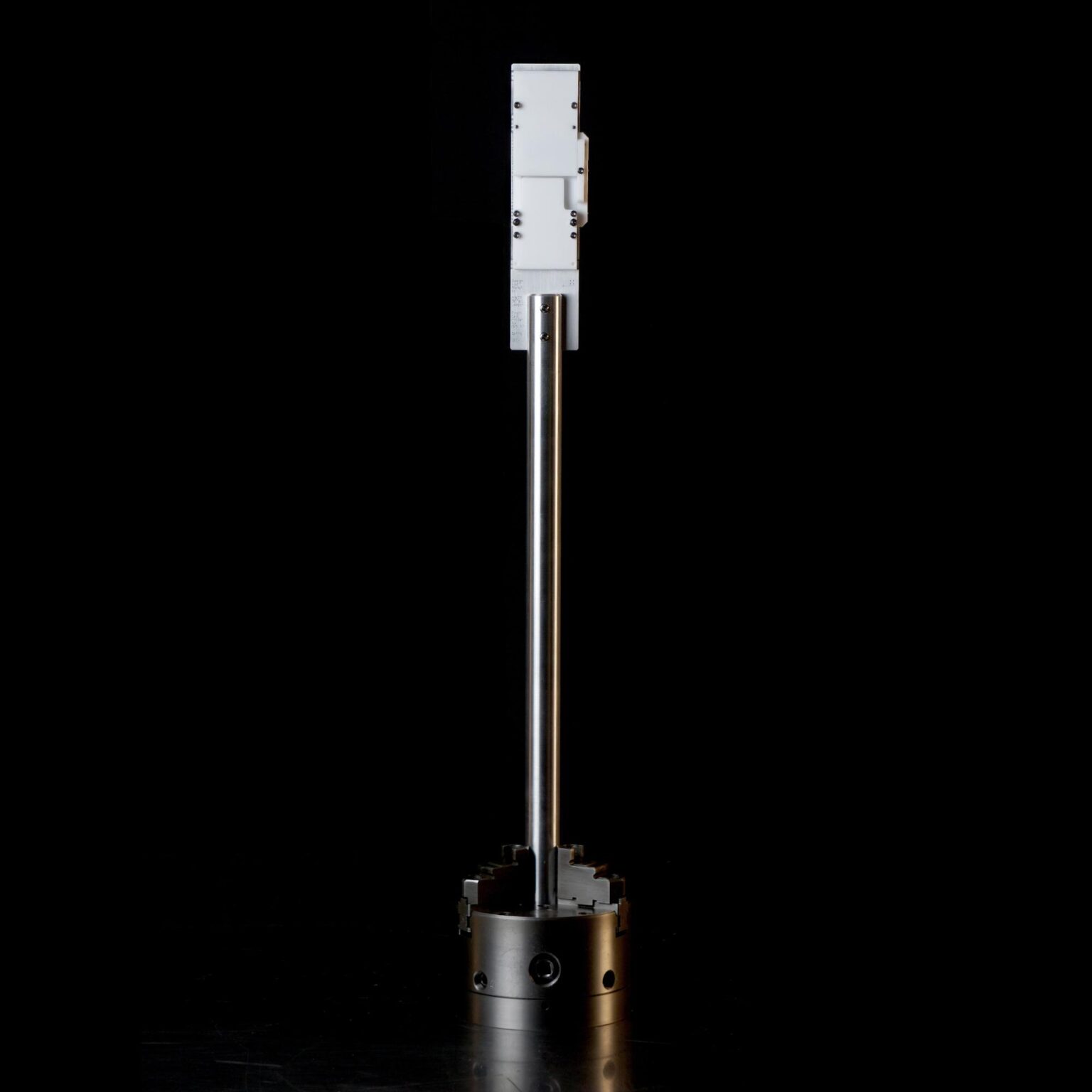
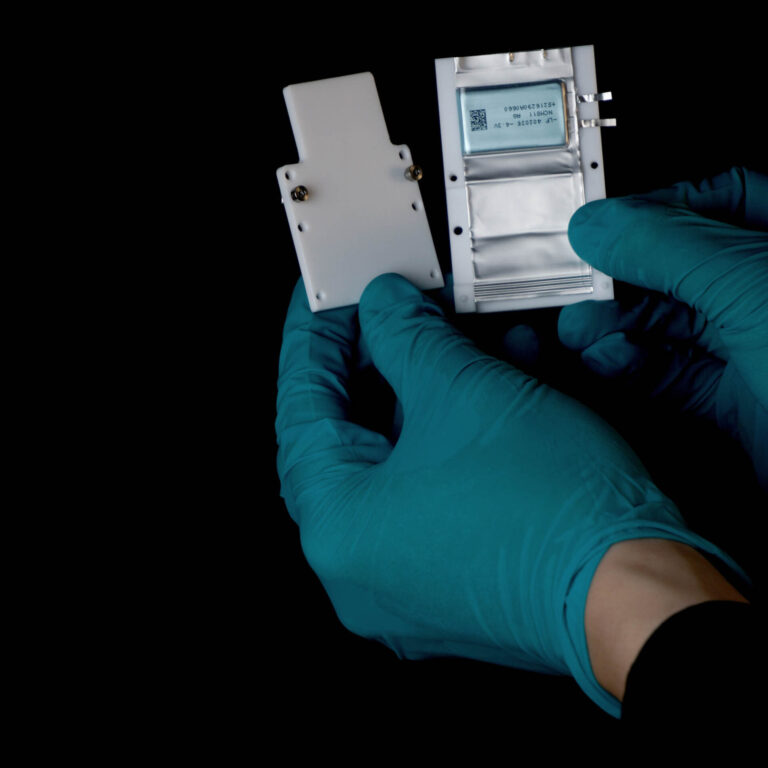
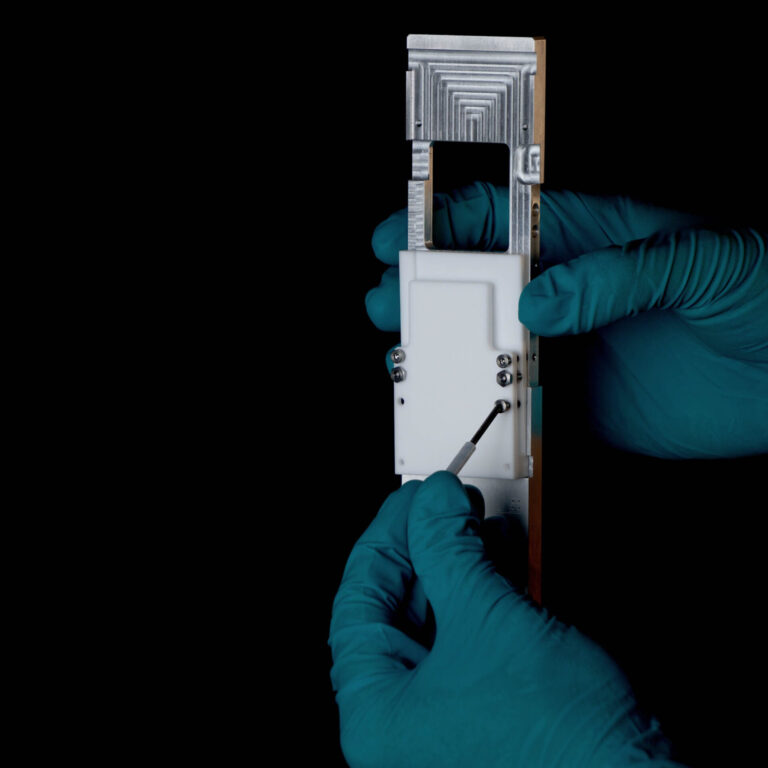
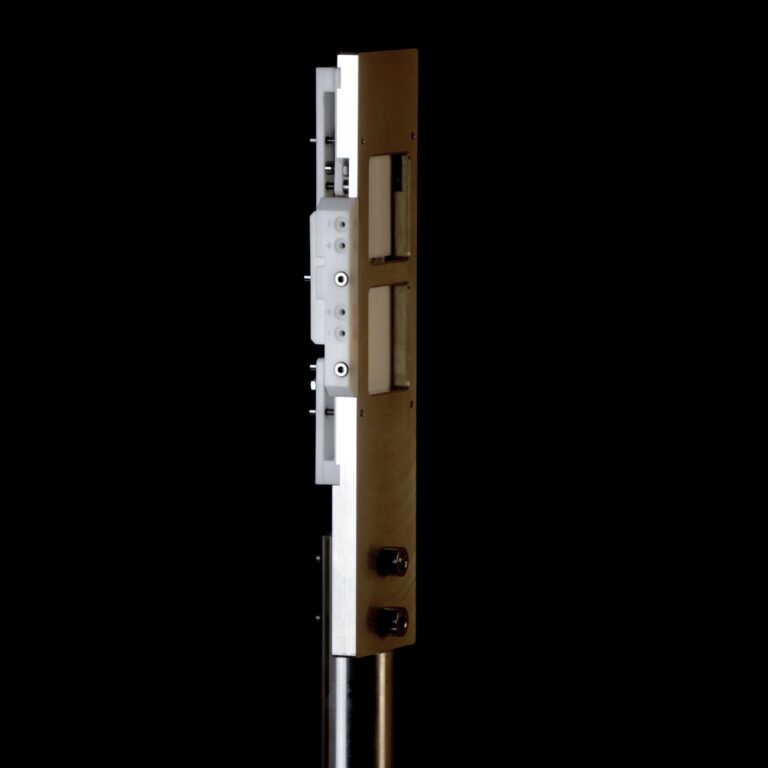
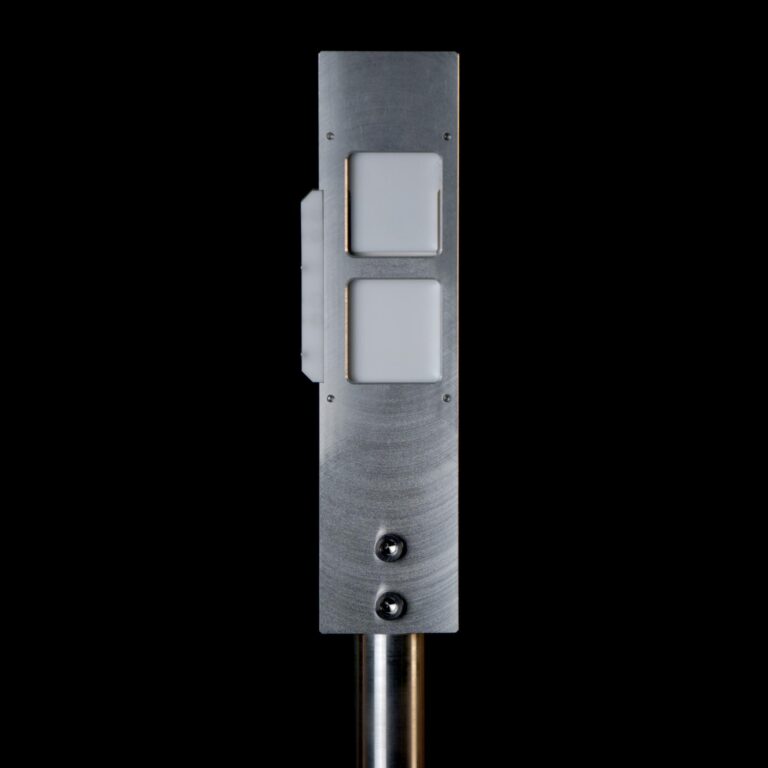
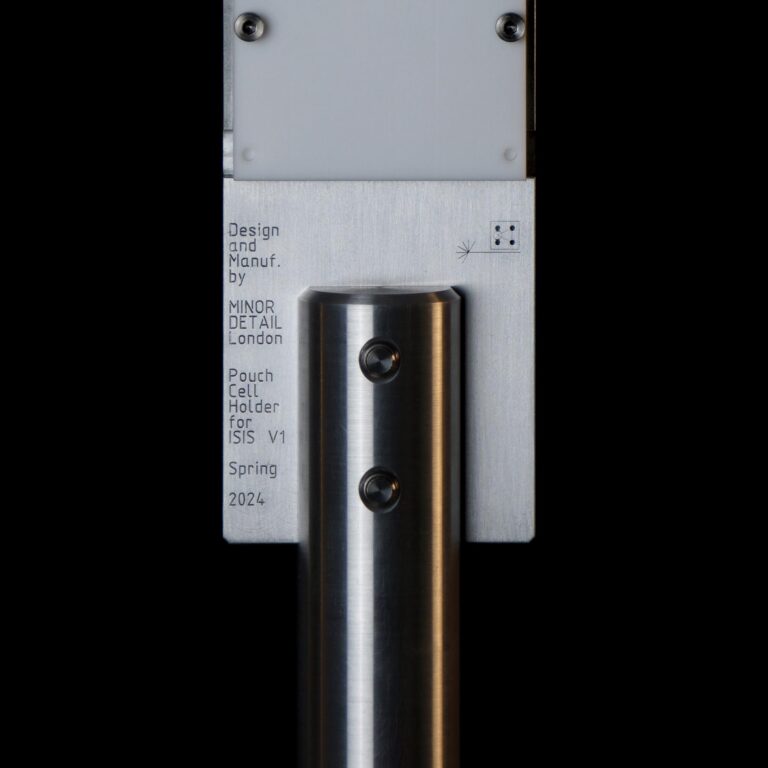

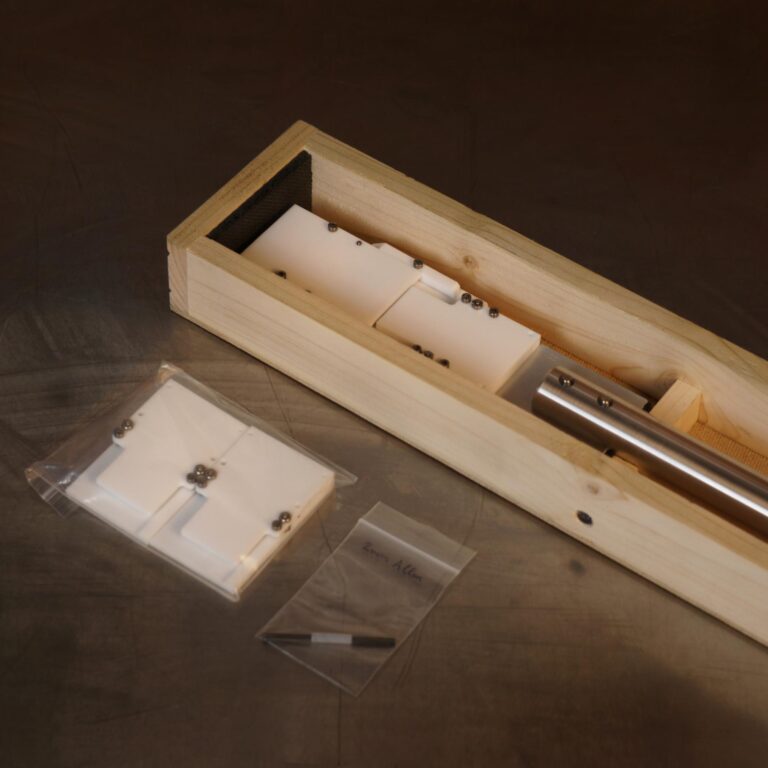
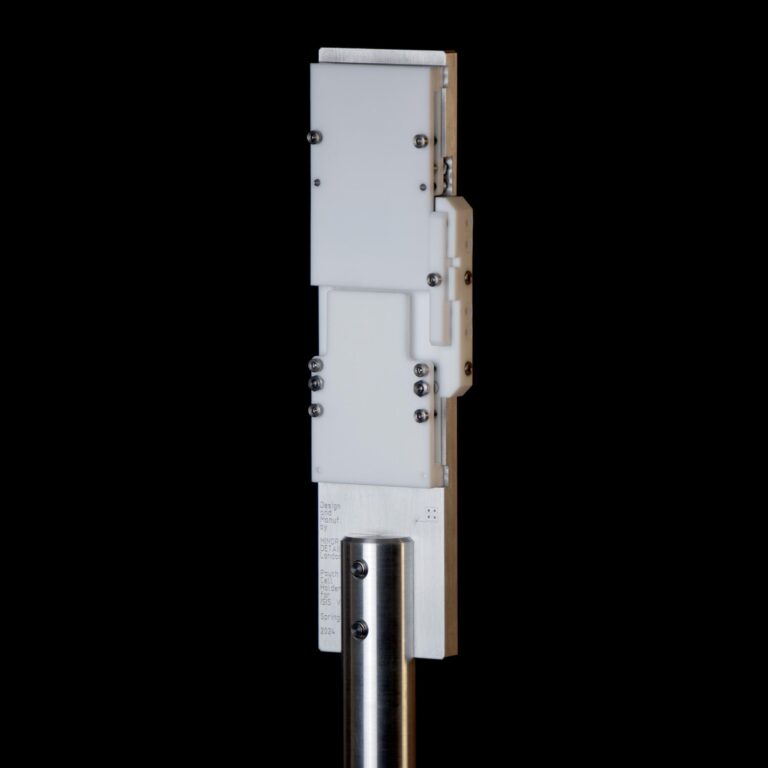
Pouch Cell Holder
PhD researcher Isabel Antony, based in Diamond Light Source, Oxford, commissioned Minor Detail’s Streamline Beamtime services to design and manufacture a sample environment (holder) for her research on standard lithium-ion pouch cell batteries.
This modular design was optimised for neutron imaging at ISIS Neutron and Muon Source, also located in Oxford. It enables high-resolution data, quick sample replacement, and in-situ electrochemistry. It was manufactured from PTFE, Titanium, and Aluminium materials that won’t stay radioactive, causing downtime during the beamtime.
Year: 2024
Material: PTFE · Titanium · Aluminium
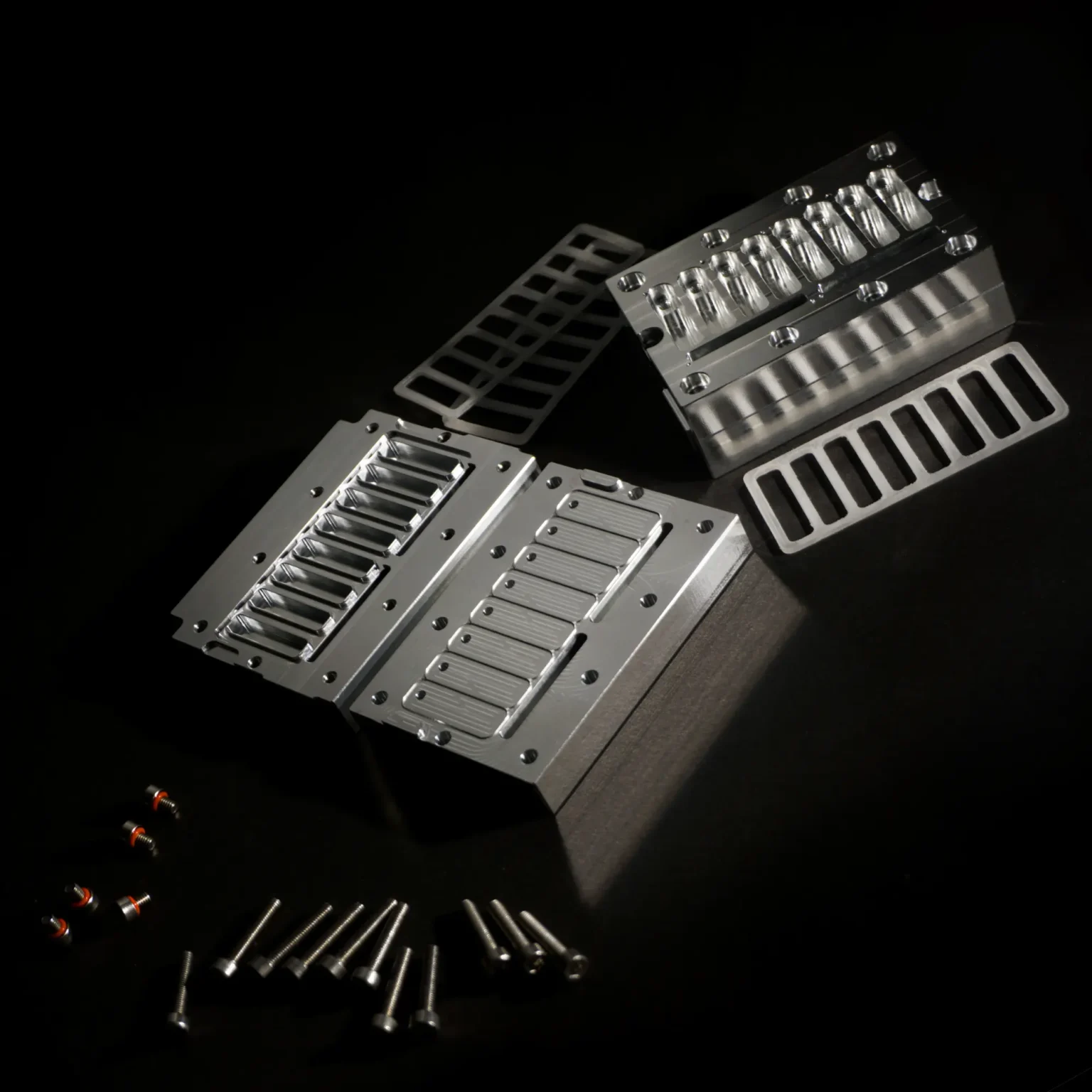
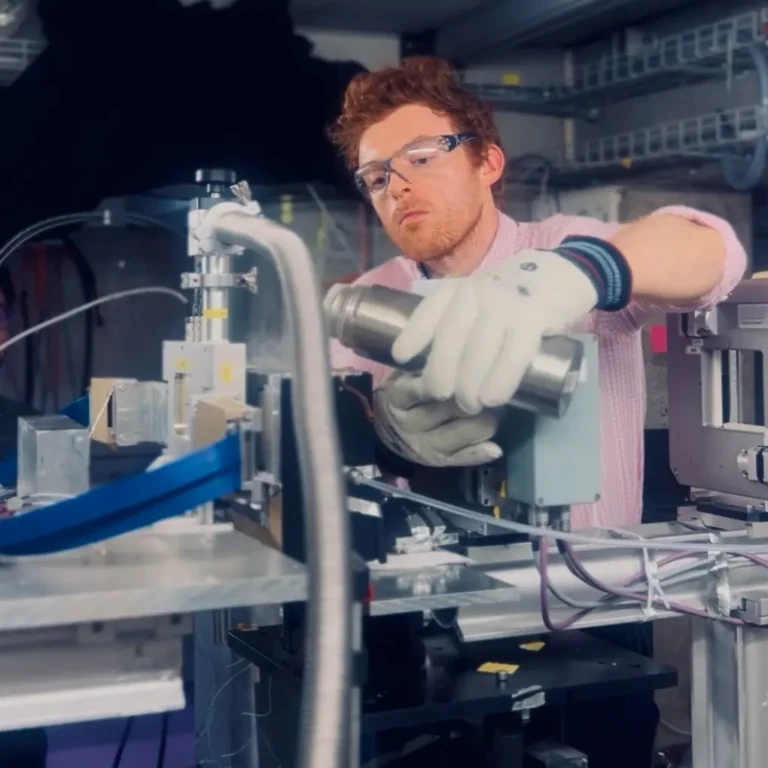
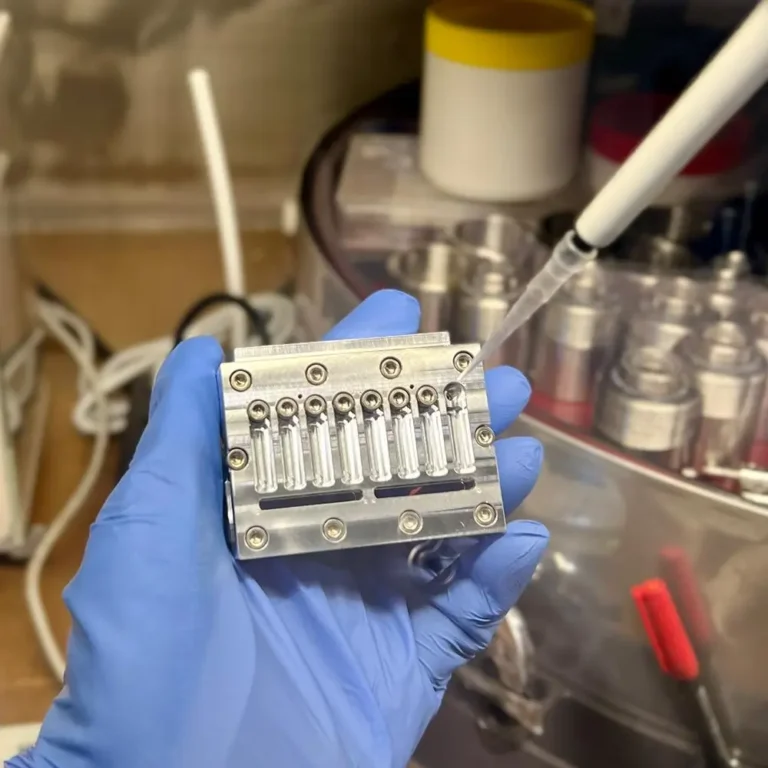

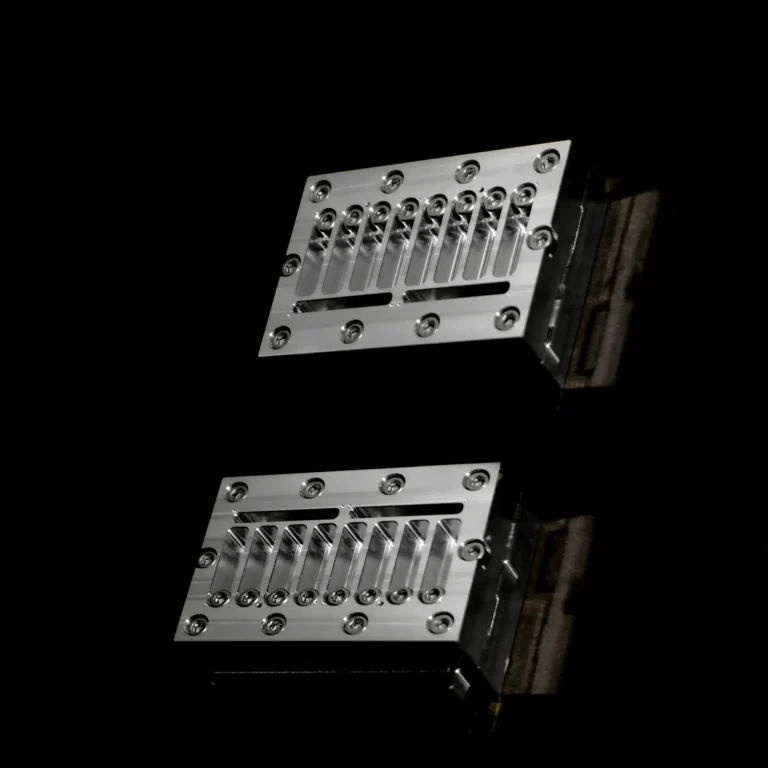
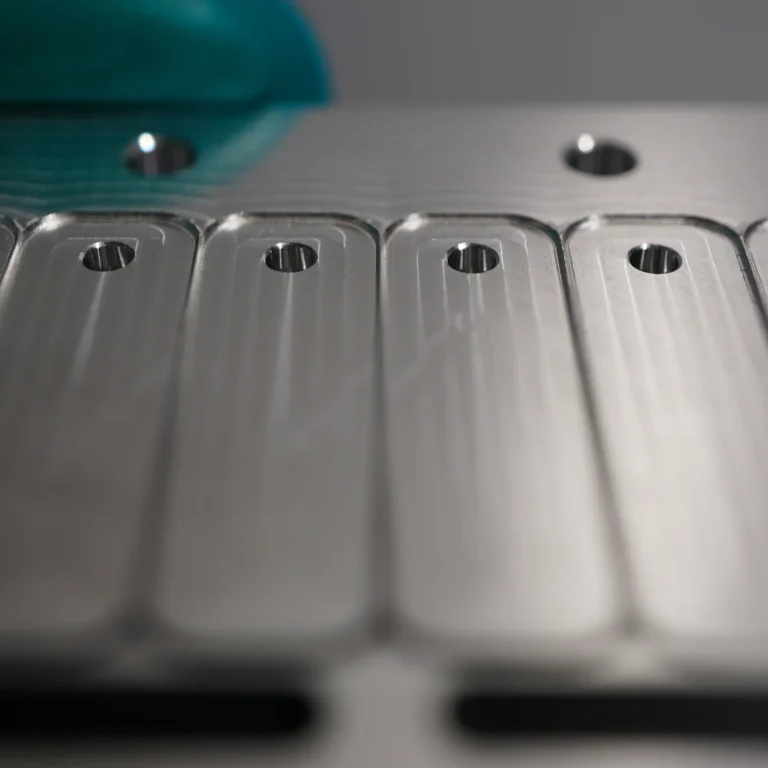
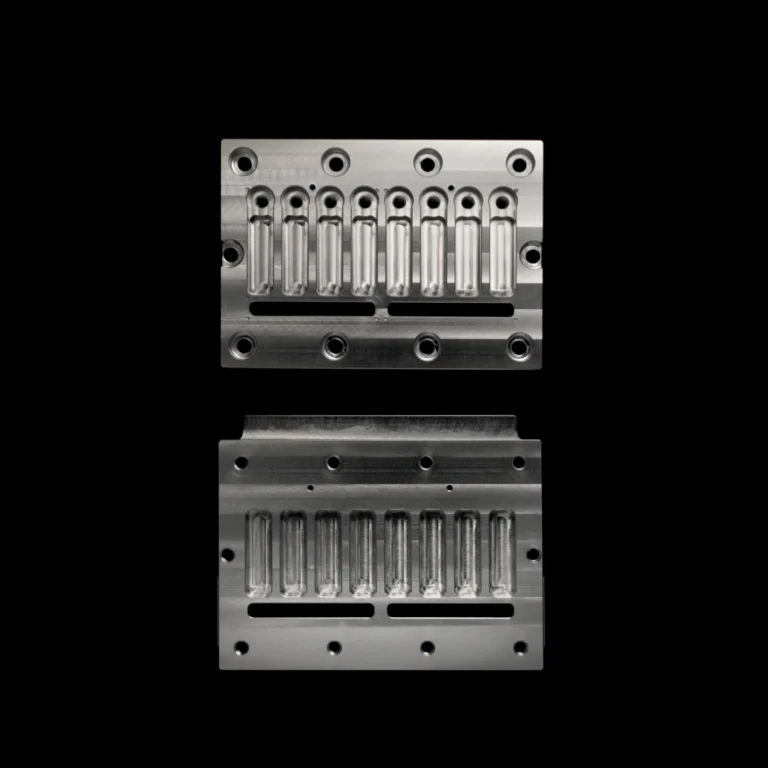
Aluvette's, for Electrolyte Neutron Imaging
The Aluvette’s were designed and produced to hold eight battery electrolyte samples each, for novel neutron imaging techniques. Commissioned by Scott Young from ISIS Neutron and Muon Source, STFC, he took them to PSI Paul Scherrer Institut in Switzerland for a scheduled spectroscopic neutron imaging beamtime with assistance from E. Ricardo Carreón Ruiz.
Notable features include:
- Dimples indicating the 28 x 28 mm field of view
- An empty slot for calibrating the detector
- A knife-edge sealing against an LDPE gasket
- Port screws with an integral seal
- Tabs for attaching it to the sample envir. box
- Ports for 1 mm thermocouple
Year: 2025
Material: Aluminium · LDPE · Stainless Steel
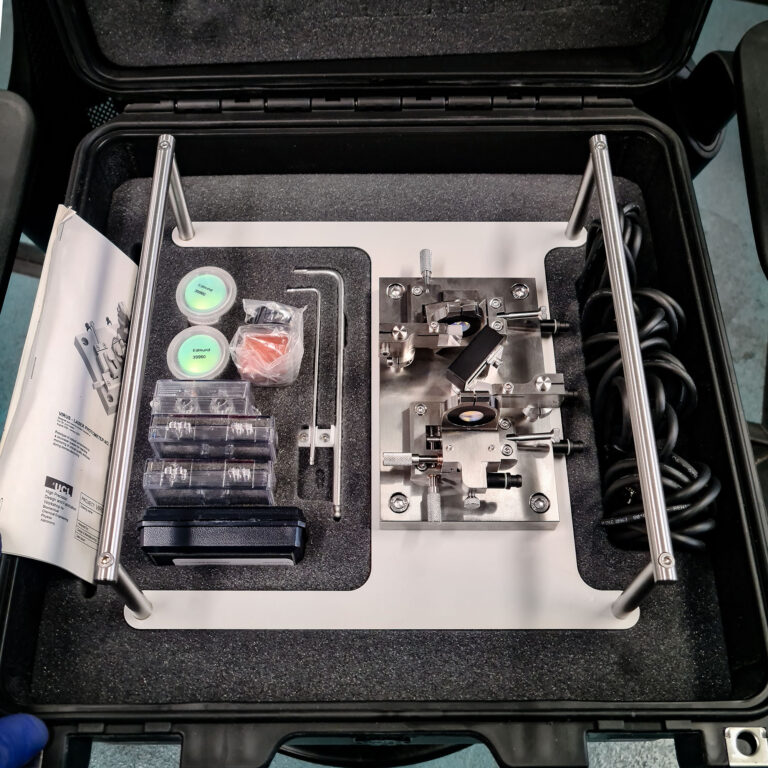
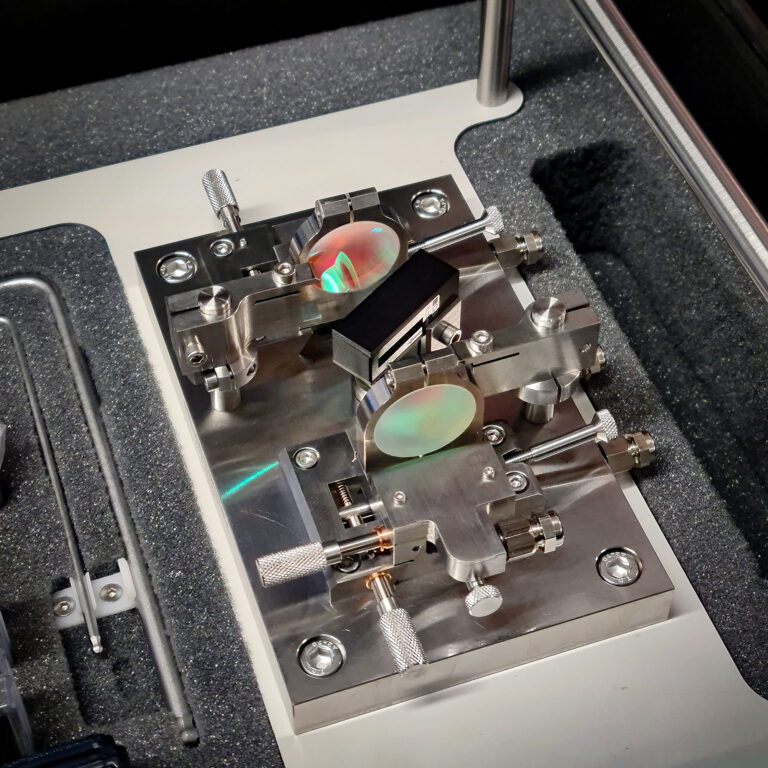
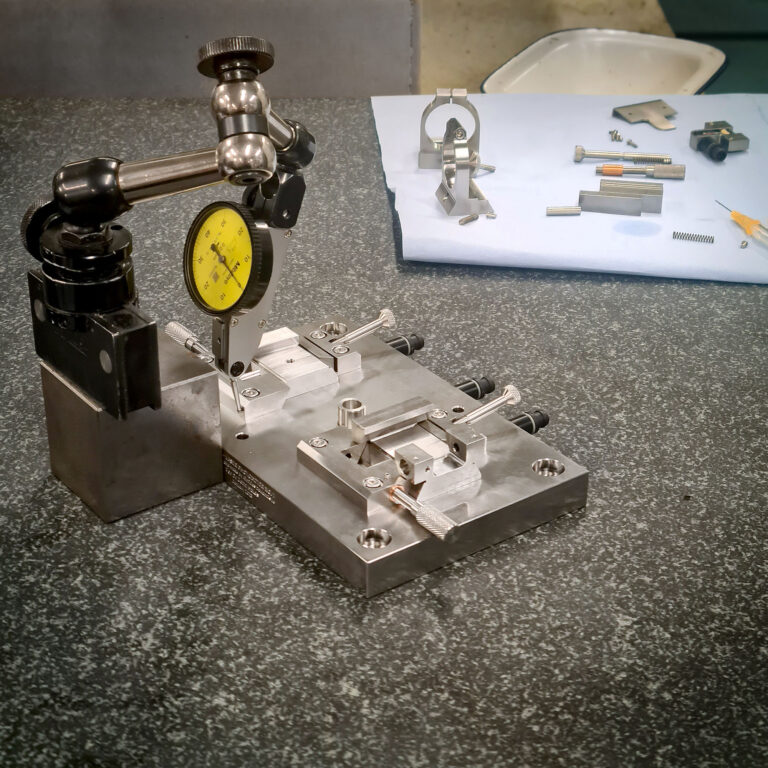
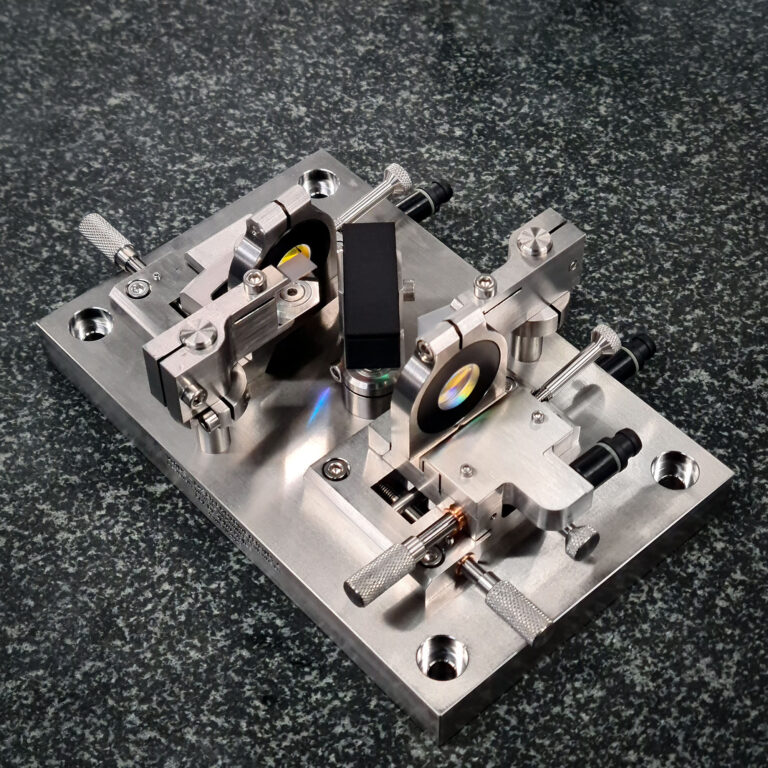
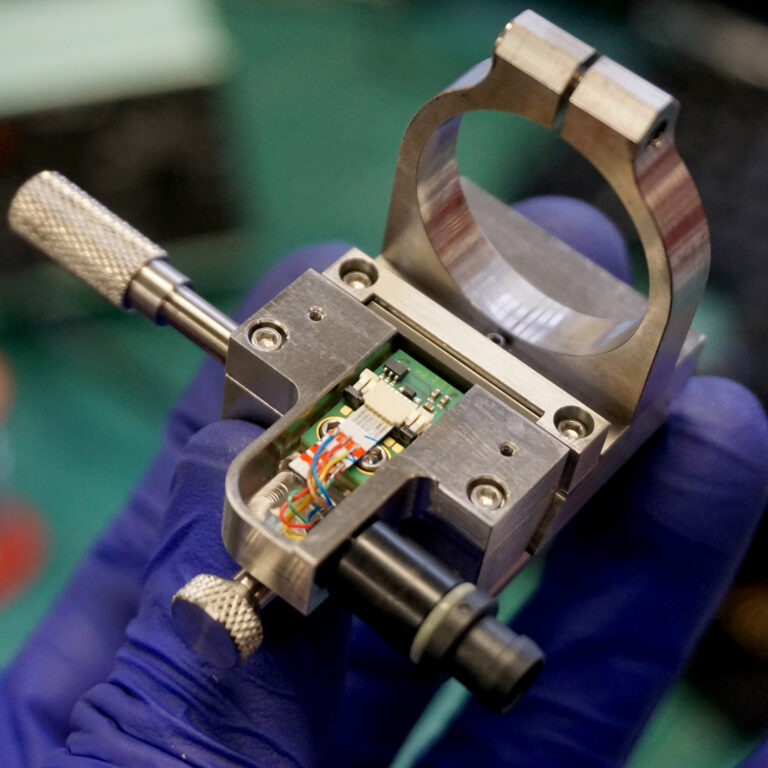
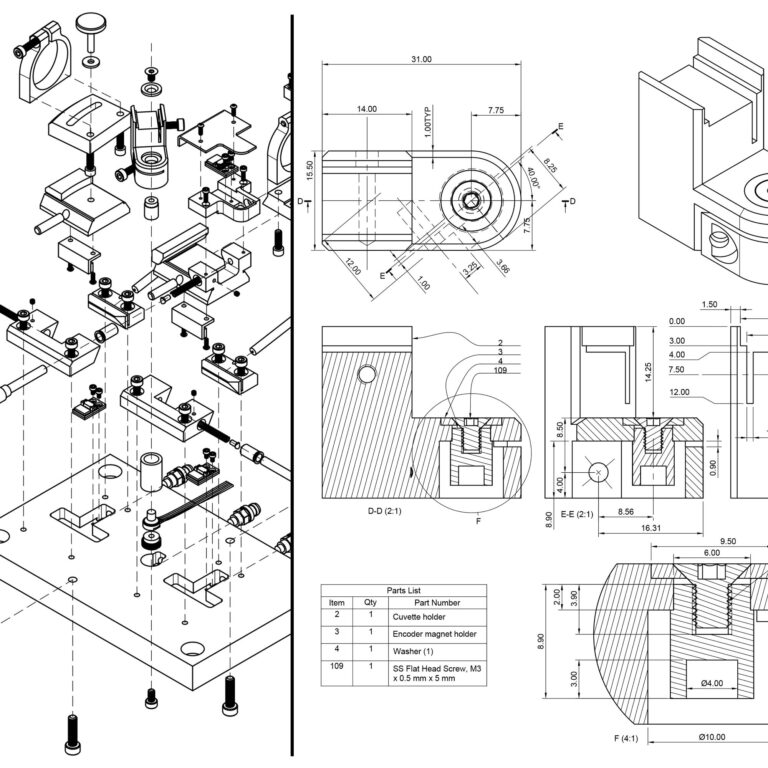
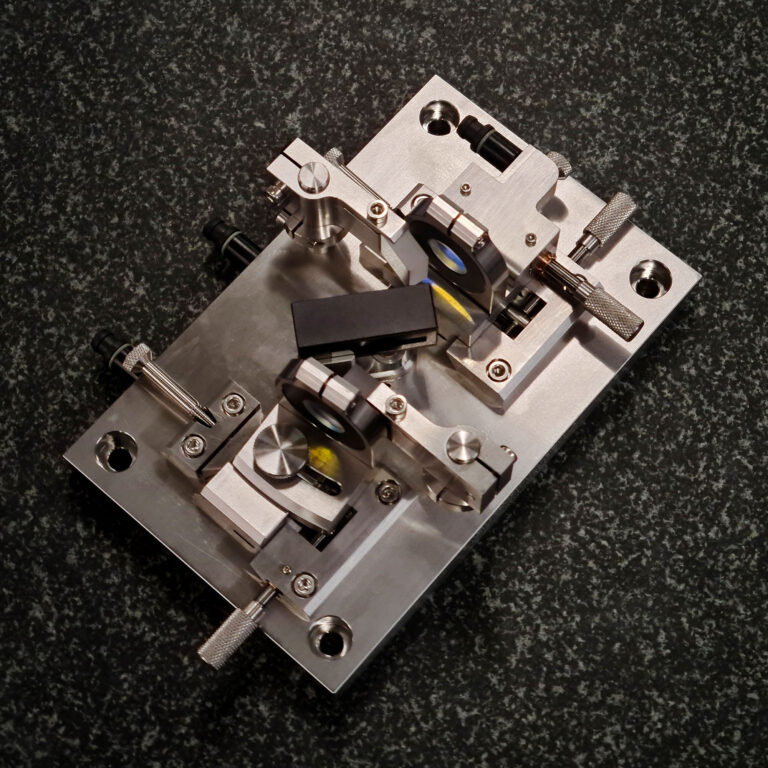
Photometer Prototype Instrument
This instrument was designed and made for Dr John Hales, UKRI Future Leaders Fellow at the UCL Department of Biochemical Engineering.
Its purpose is to test new analytical technologies for characterising biopharmaceutical products. This compact prototype holds four unique laser mirrors, which can be finely adjusted to sub-micron resolution with the turn of custom micrometre screws and checked by digital linear encoders.
Year: 2022
Material: Glass Optics · Stainless Steel · Copper · Acetal
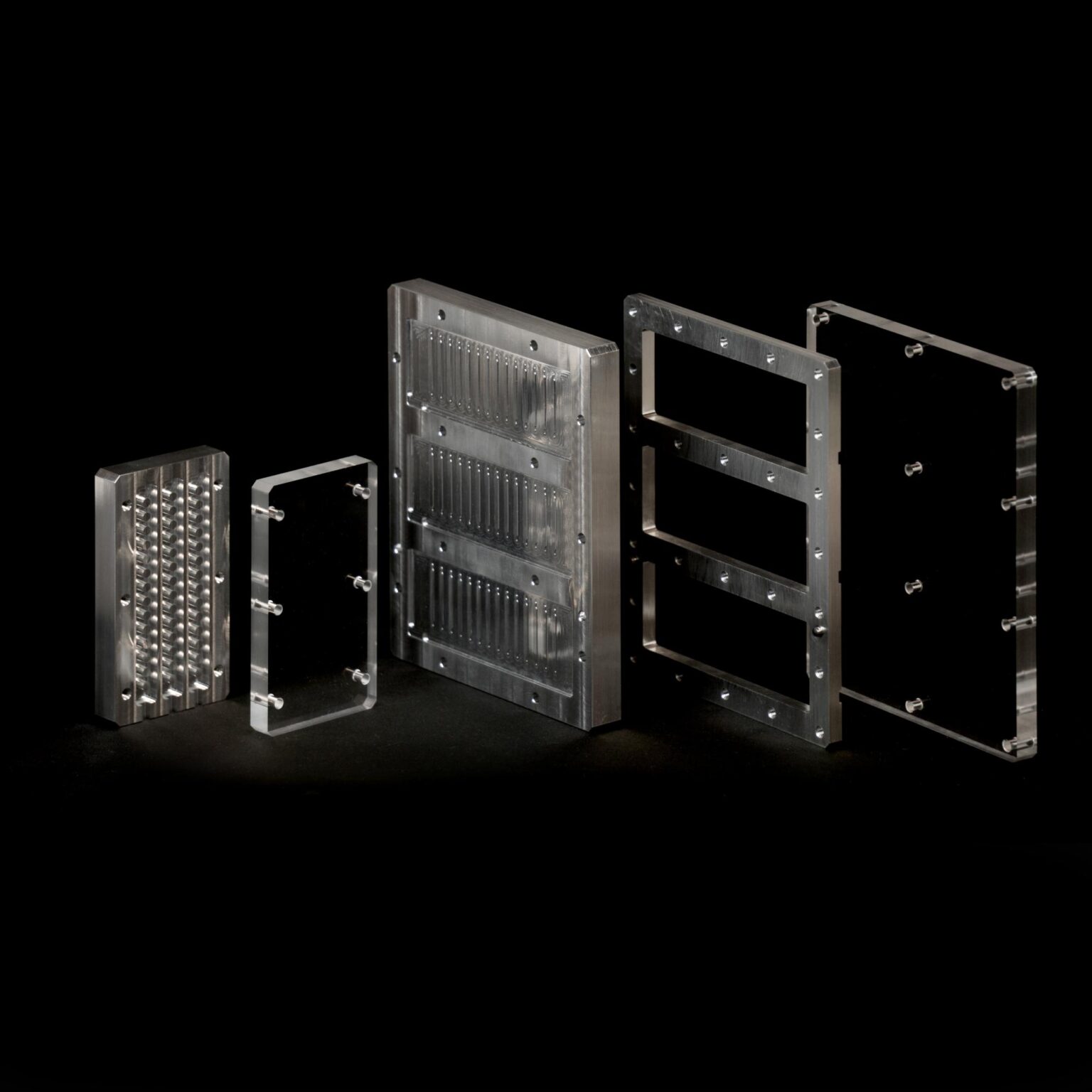
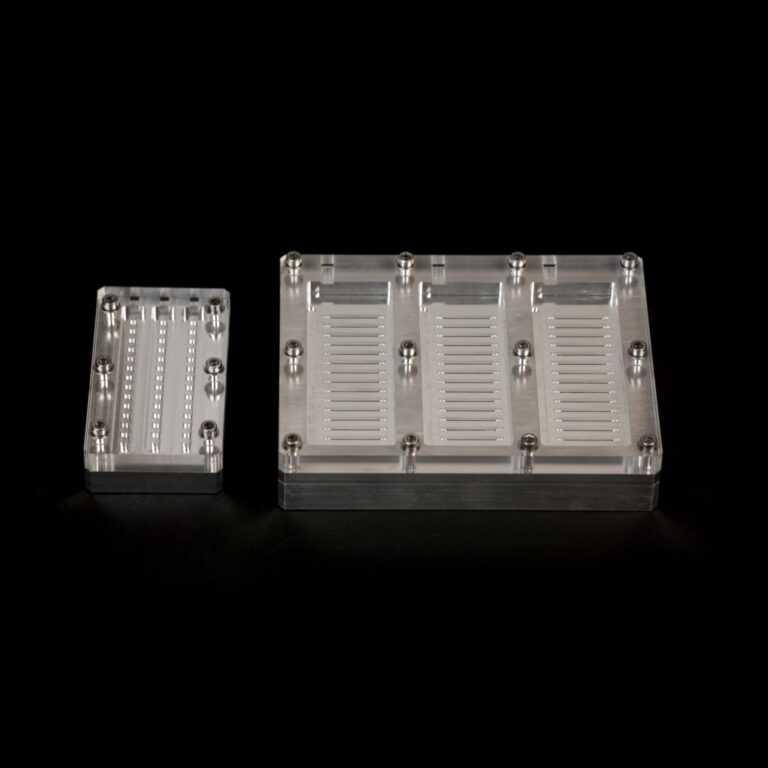
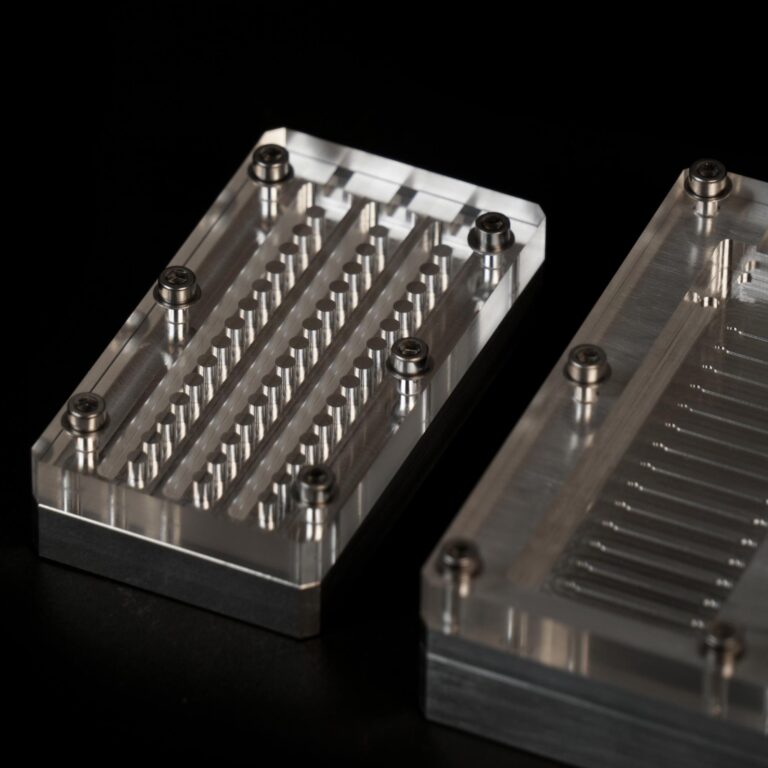
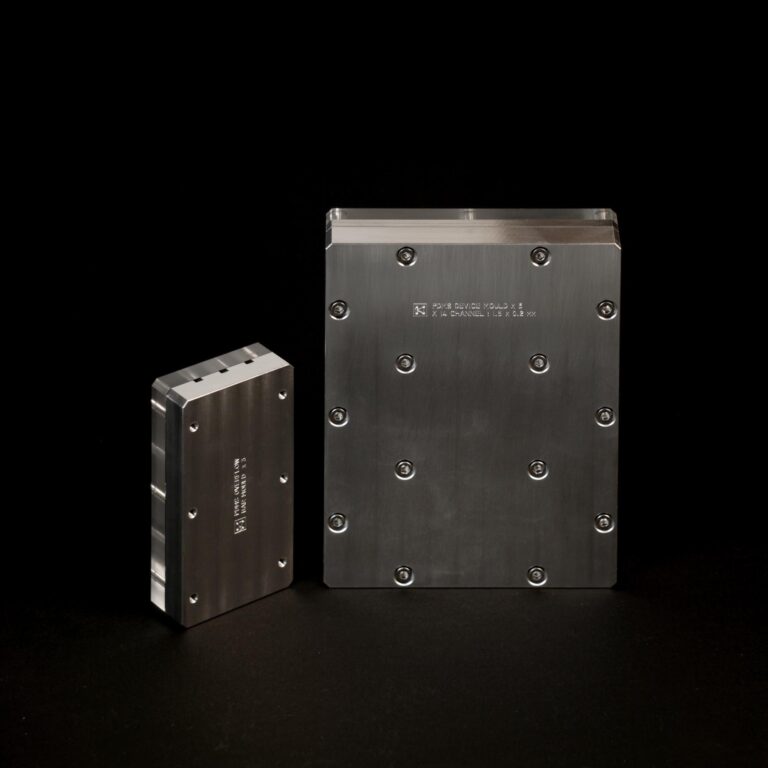
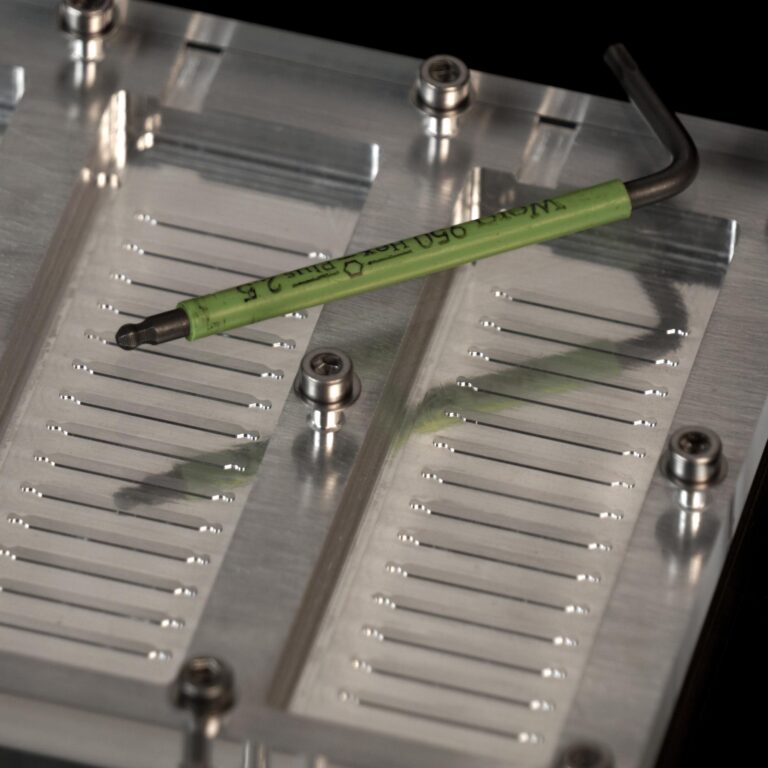
Molds for Microfluidics Devices
Two aluminium moulds were commissioned by the Zayed Centre for Research into Rare Disease in Children.
The moulds are used to create optically clear PDMS casts that serve as microfluidic devices for cell and gene therapy research.
The multi-part mould design allows easy cleaning and maintenance and the ability to repolish the intricate internal features.
Year: 2024
Material: Aluminium · Acrylic · Stainless Steel Hardware
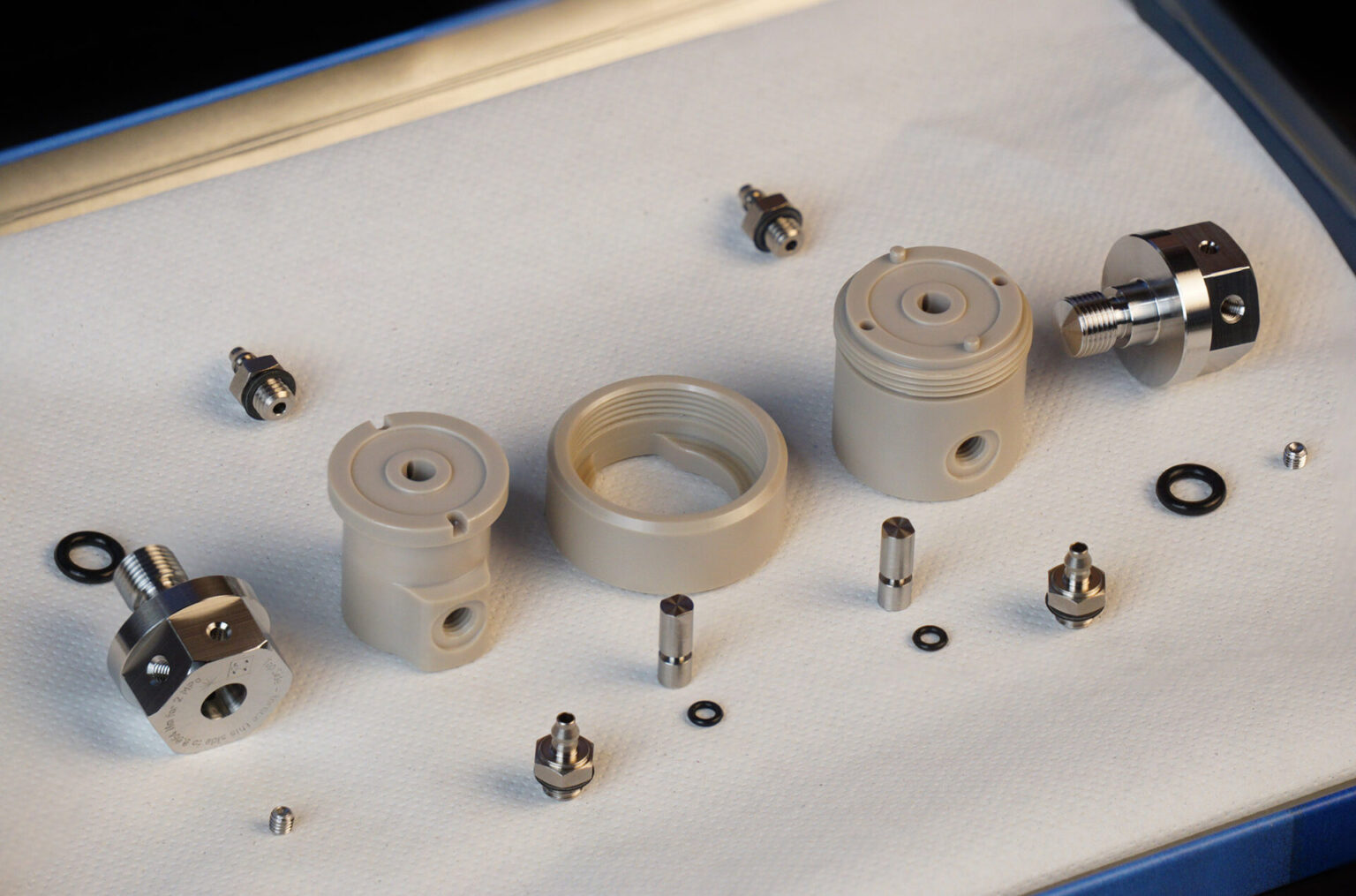
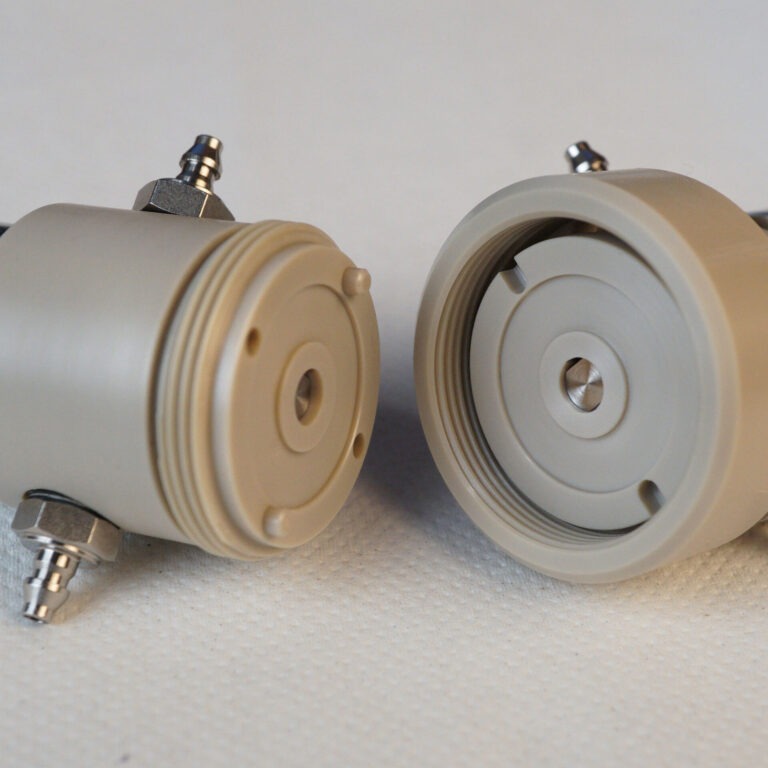
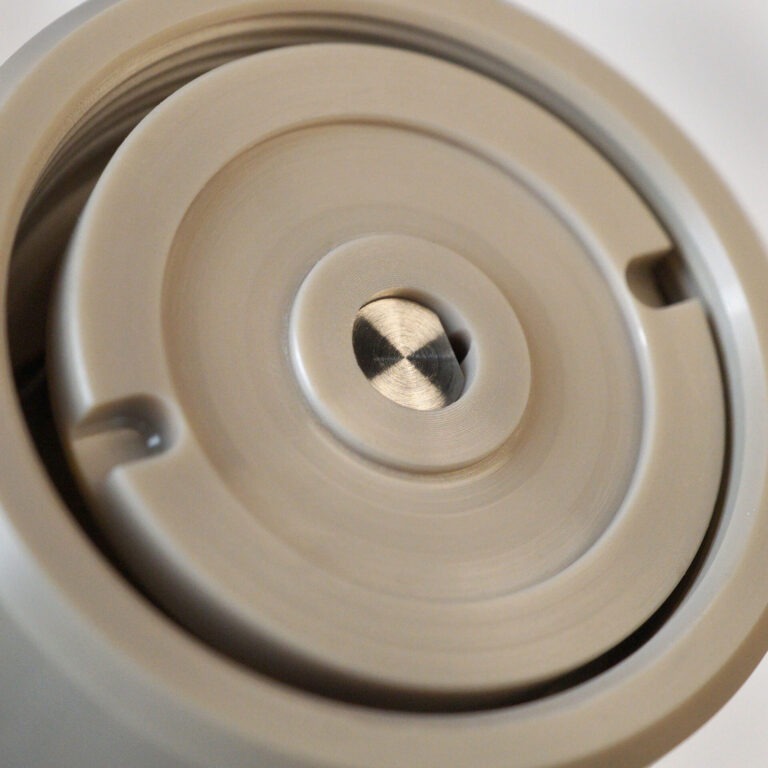
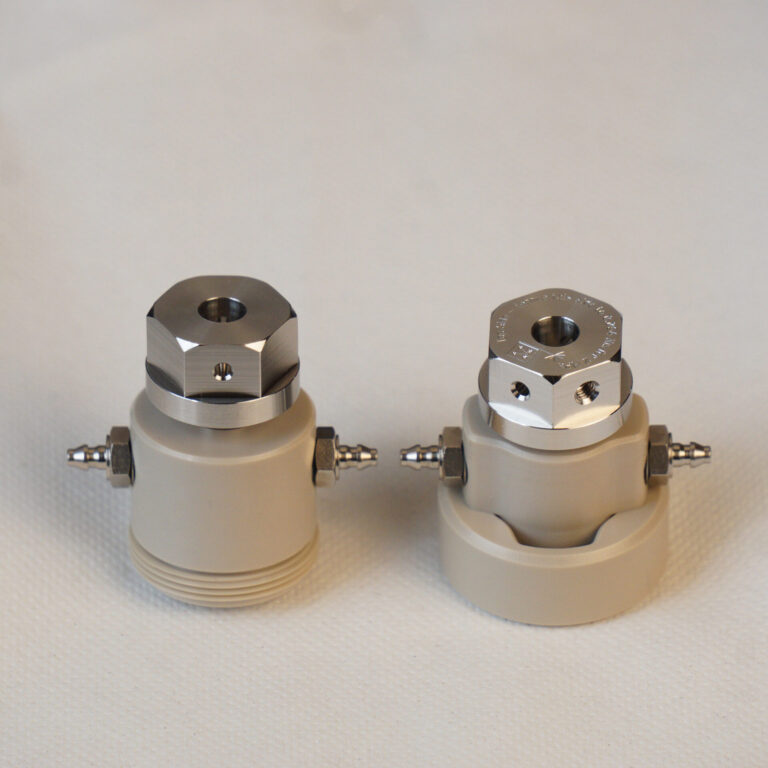
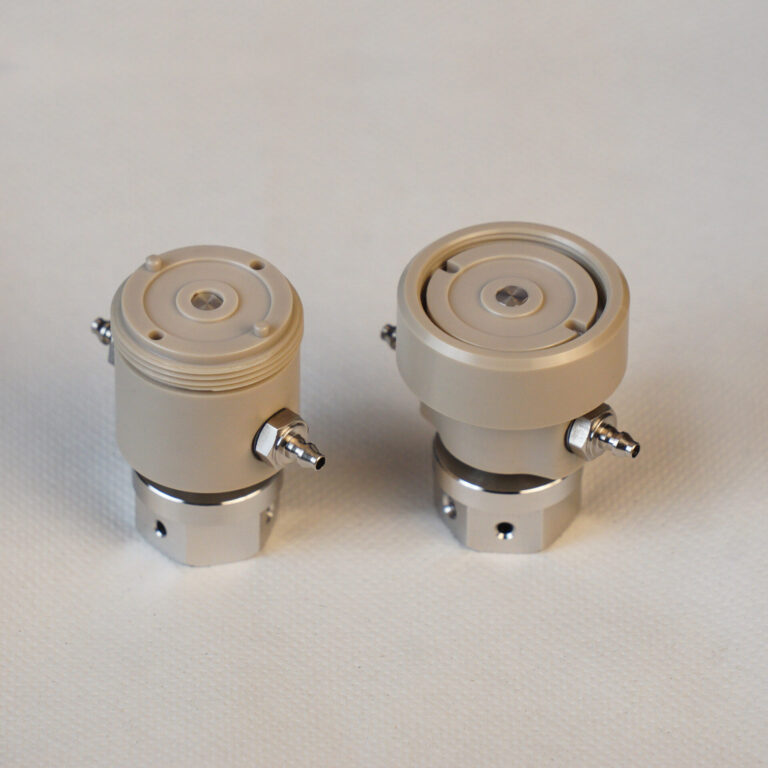
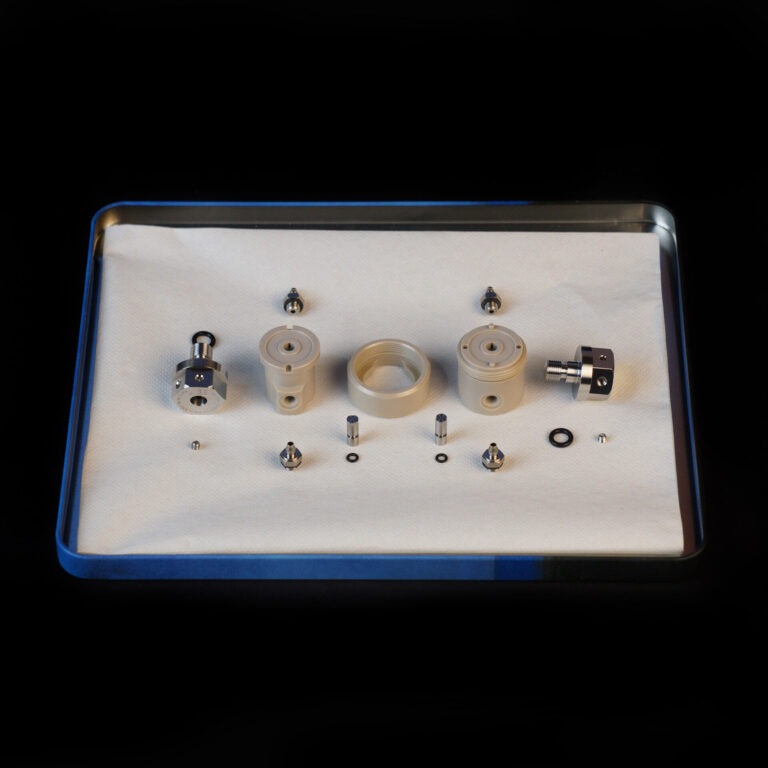
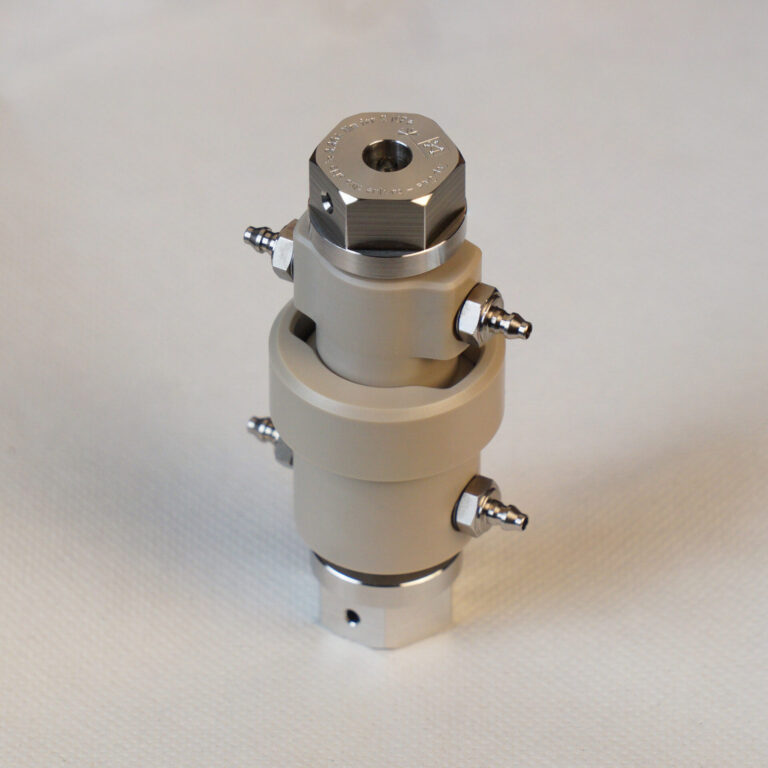
Cell for Electrochemical Engineering
In partnership with Streamline Beamtime, the design and construction of this 4.2 mm in diameter active area cell were commissioned by UCL’s Electrochemical Innovation Lab. It is part of a research project led by Yue Wen and Iain Malone, who are studying AEM water electrolysis for hydrogen production used in renewable energy storage systems.
Year: 2023
Material: PEEK · Stainless Steel · Titanium · Rubber
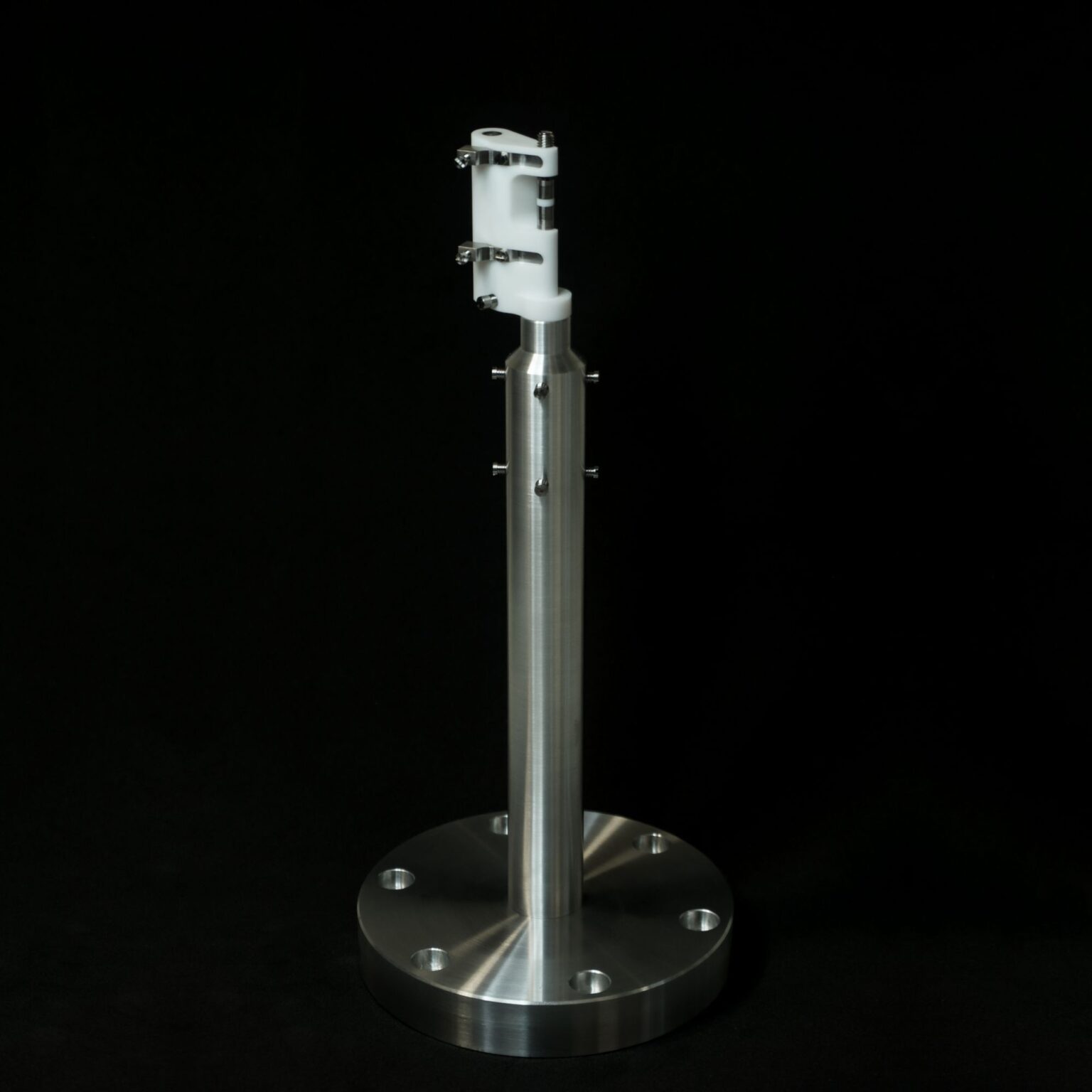
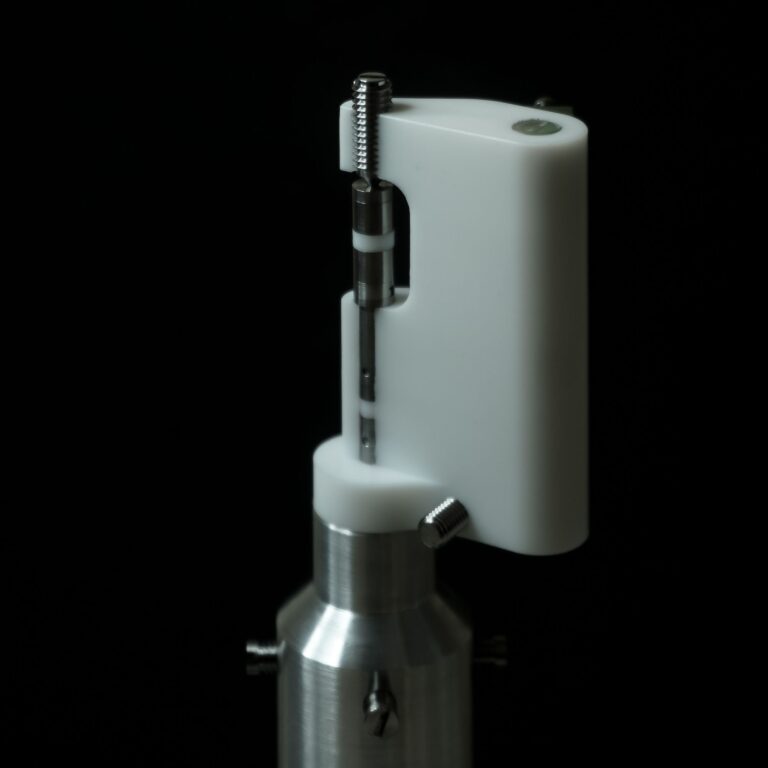
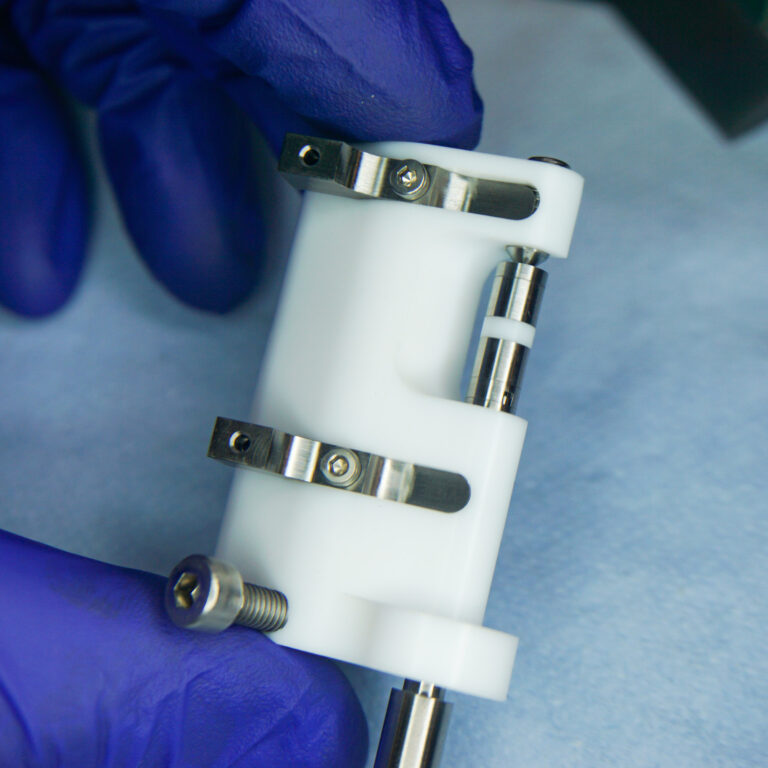
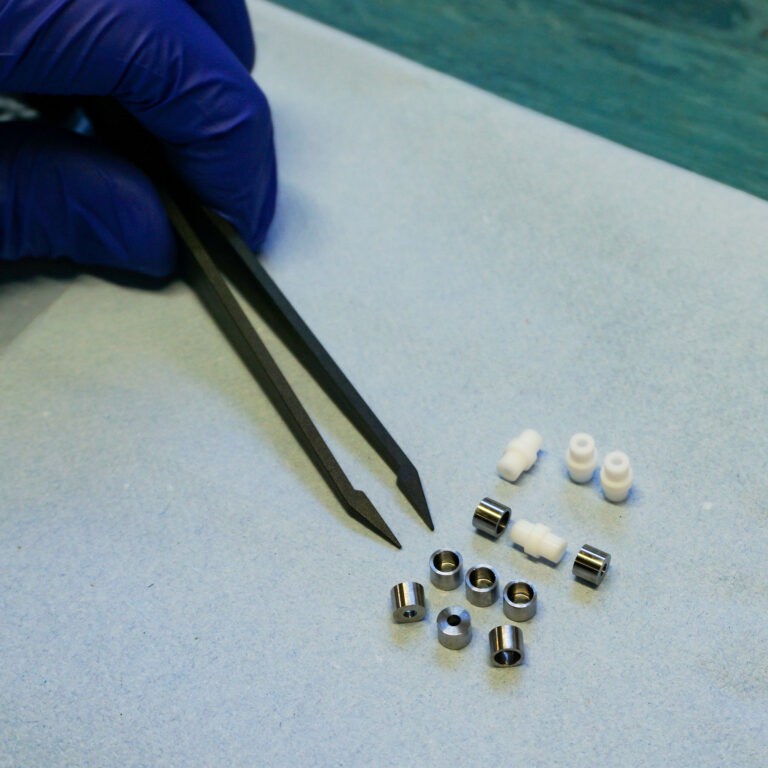
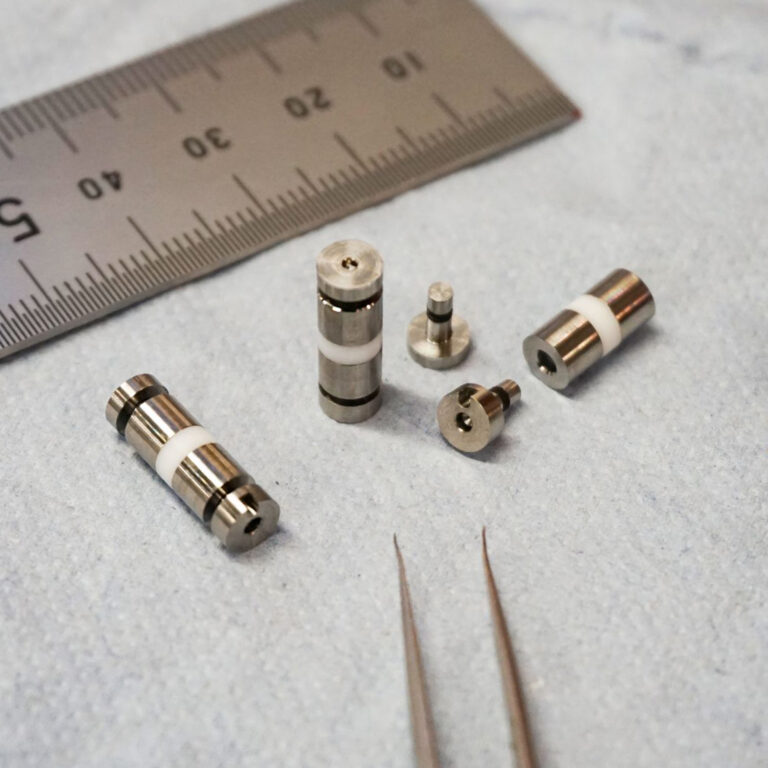
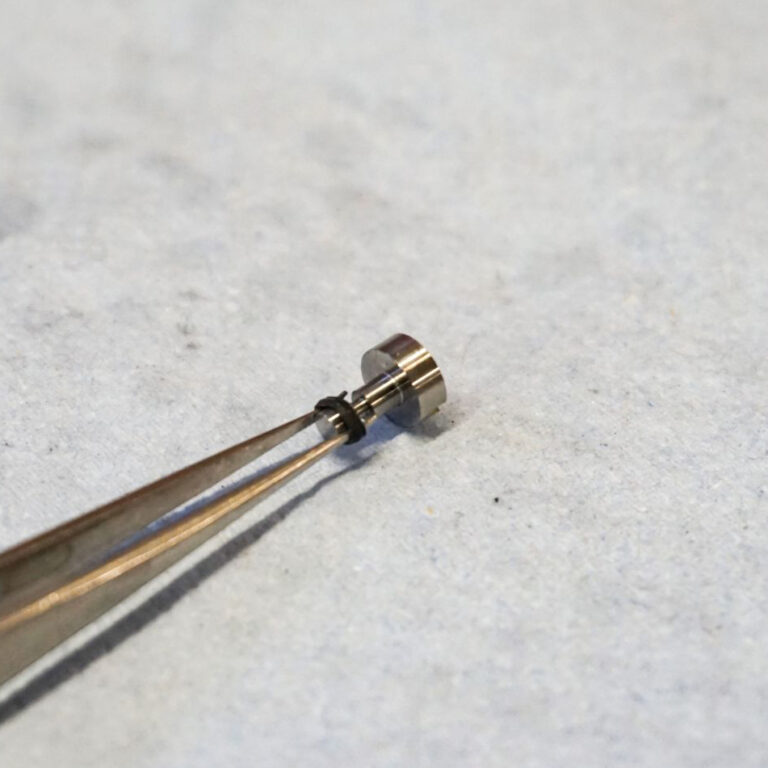
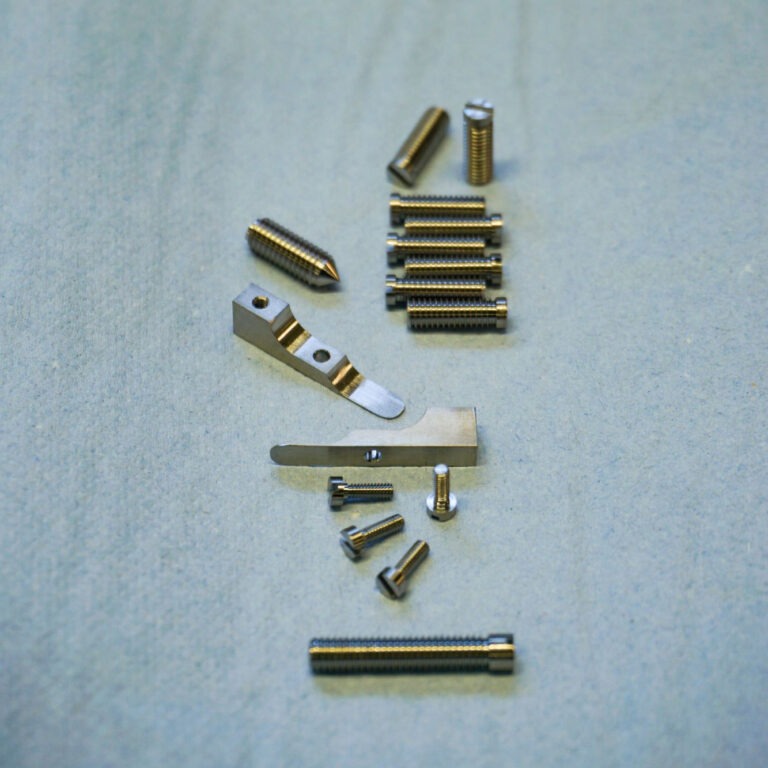
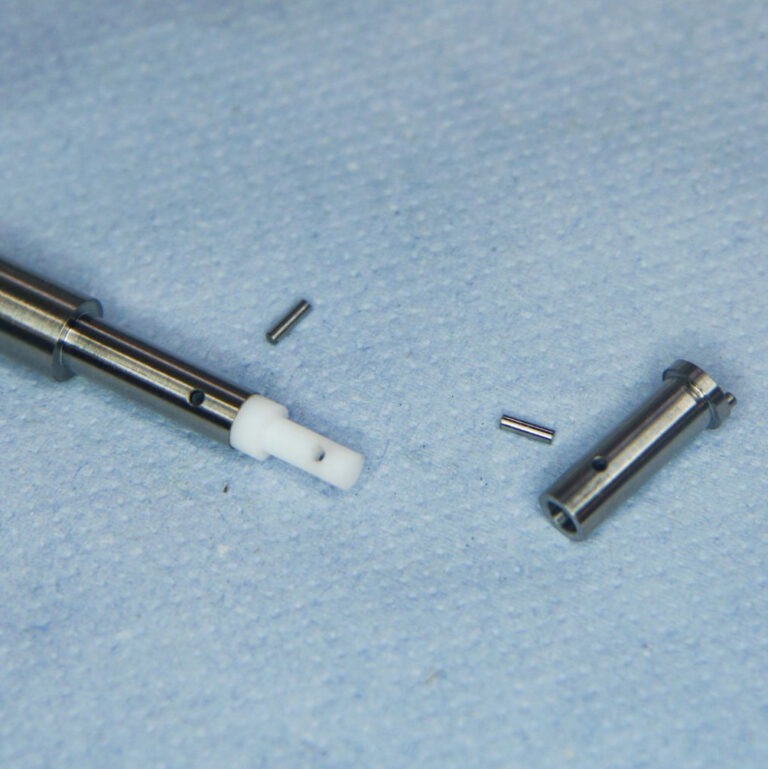
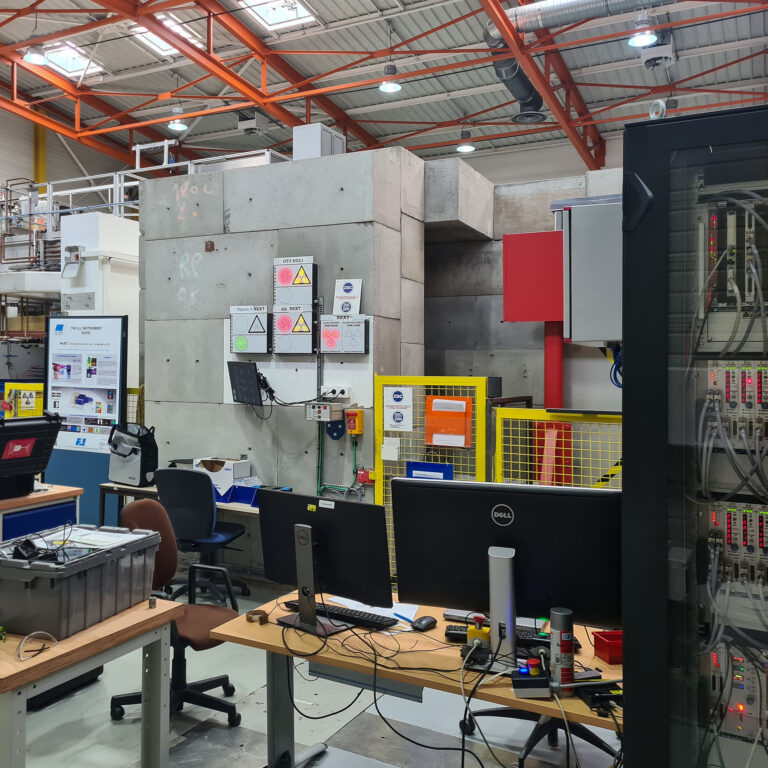
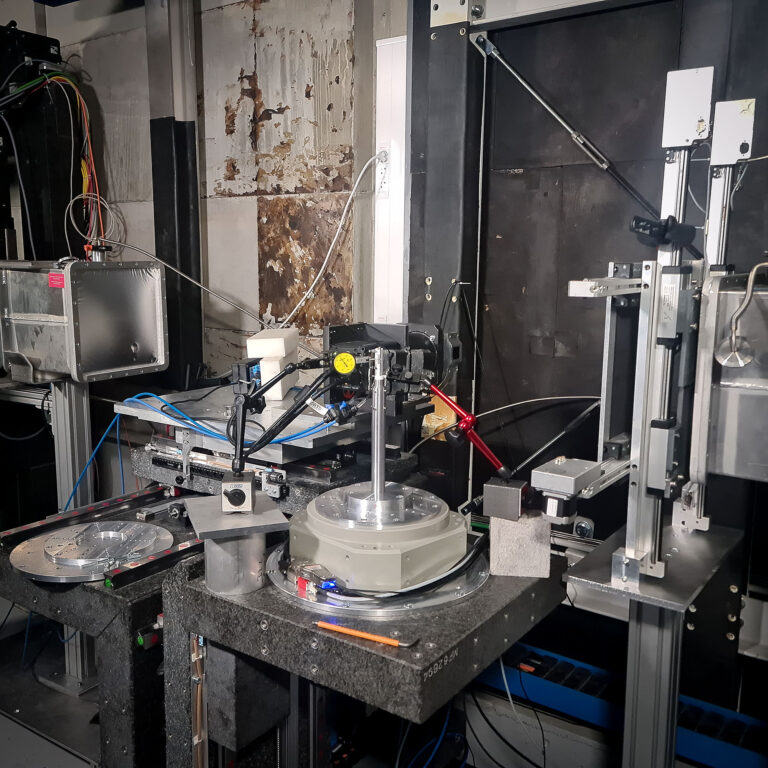
Neutron Computed Tomography Cell
This assembly was designed for a neutron tomography experiment conducted at Institut Laue–Langevin (ILL)’s nuclear facility in Grenoble, France. Neutron tomography is used to create a high-resolution 3D model of an object’s internal structure, typically lithium-ion batteries.
The assembly works as a custom fixture that holds interchangeable samples (in this case, 2mm diameter by 0.5mm thick battery cells). The experiment will reveal how solid-state battery cells decay, helping the scientists understand internal crack formations and changes in porosity.
It compresses the samples firmly at a specific height while allowing them to rotate during the scanning process. The shape of the white PTFE C frame is relieved, exposing the samples just a few millimetres away from the face of the detector. The two faces of the cell are electrically insulated, and cable leads can be fixed on each titanium tab for conductivity tests. There are eight M4 grub screws to fine-tune the runout and tilt.
Year: 2023
Material: PTFE · Aluminium · Titanium
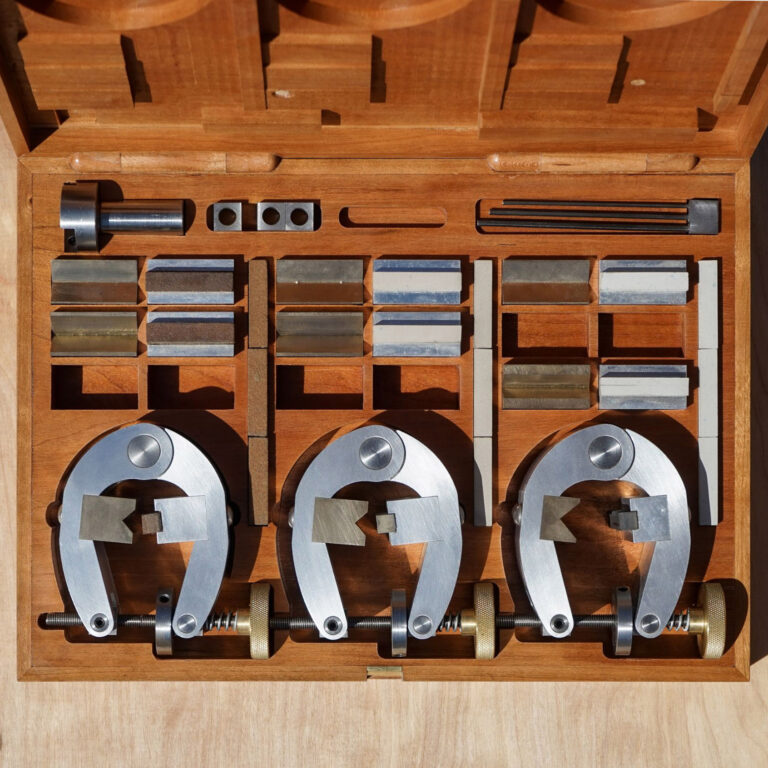
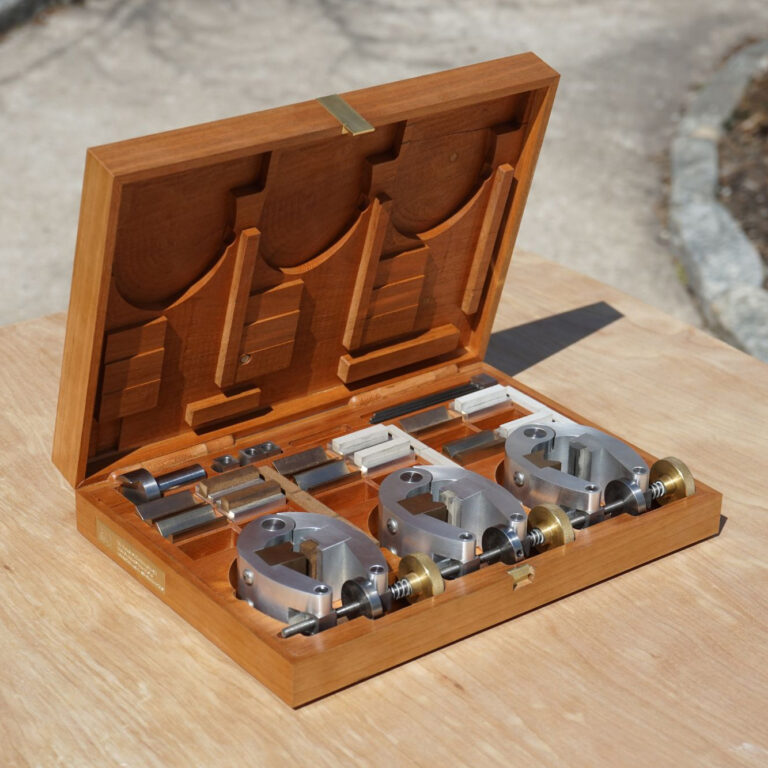
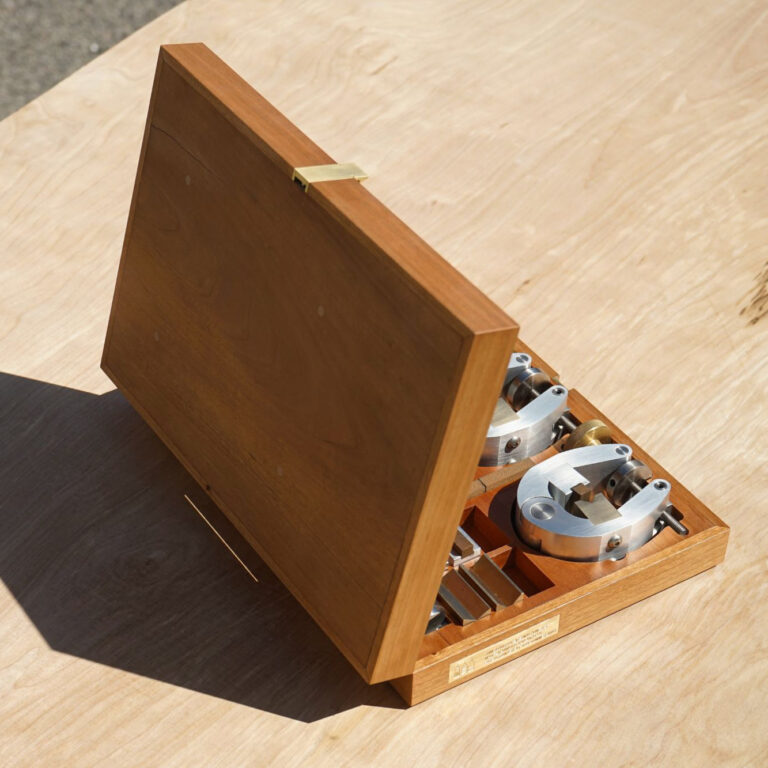
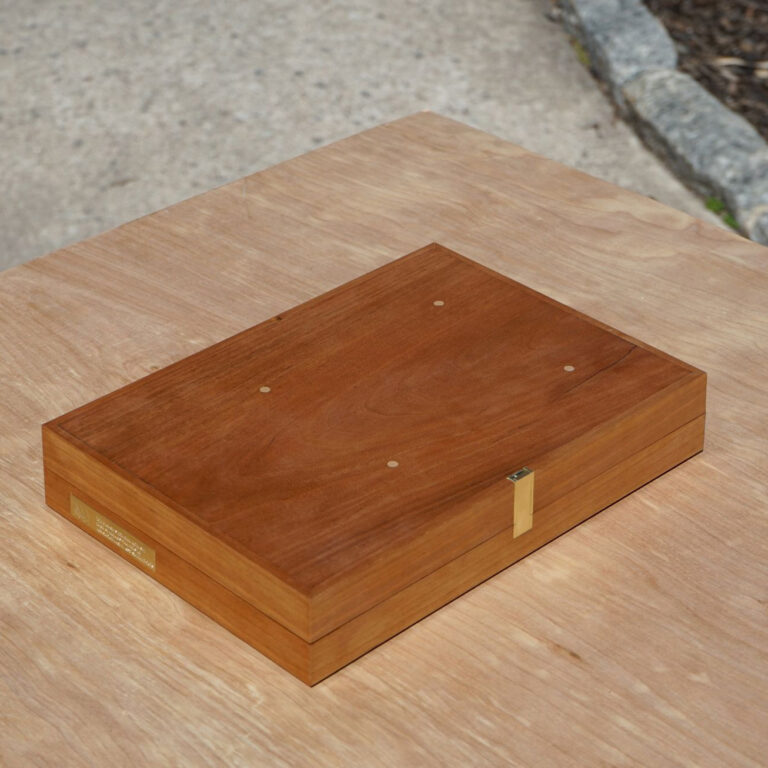
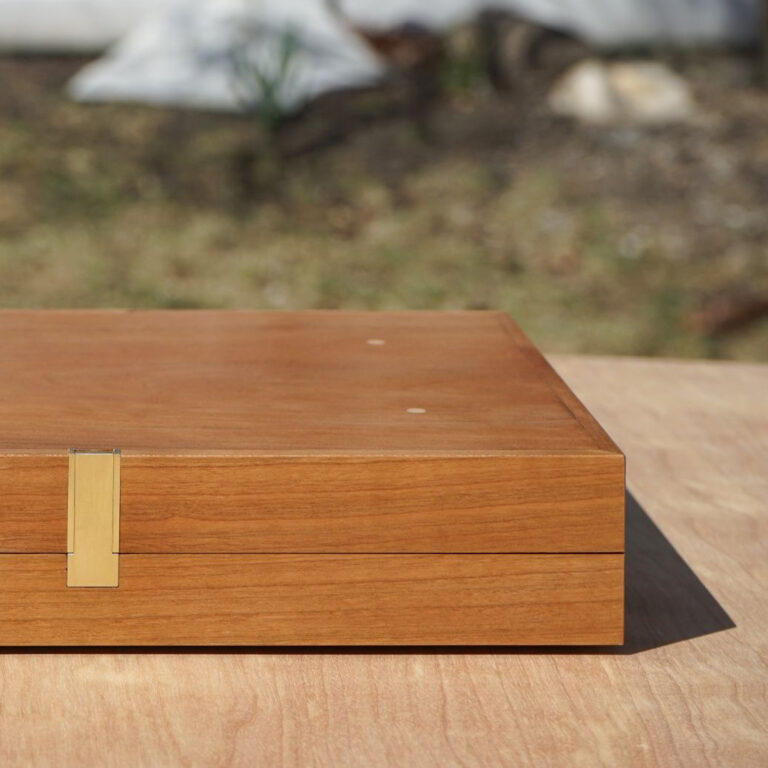
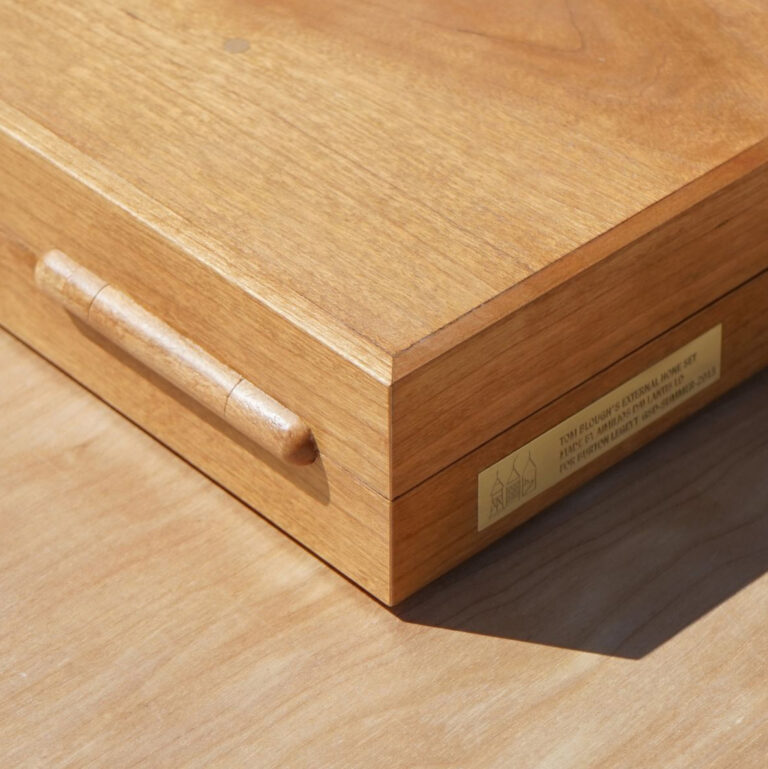
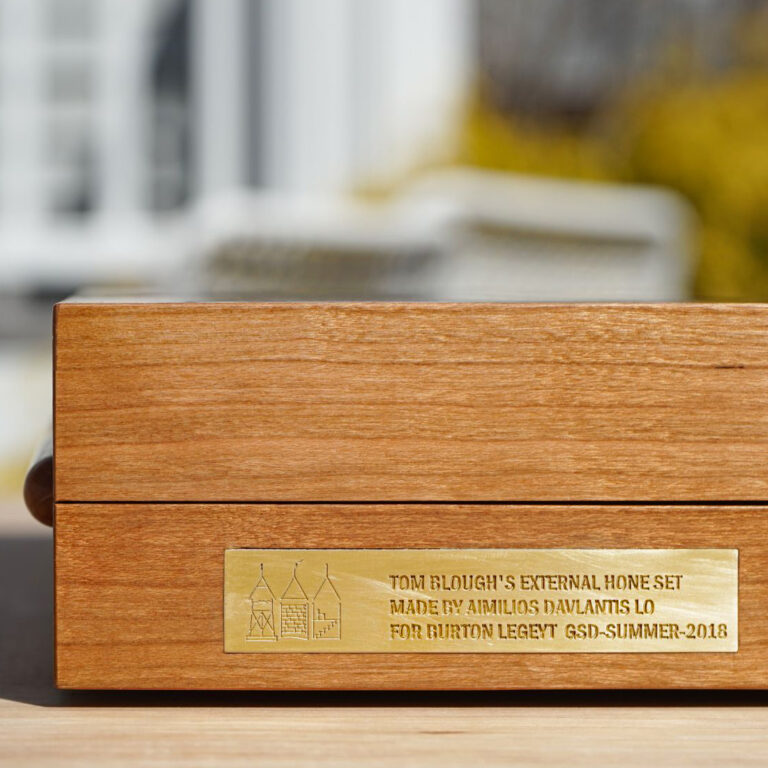
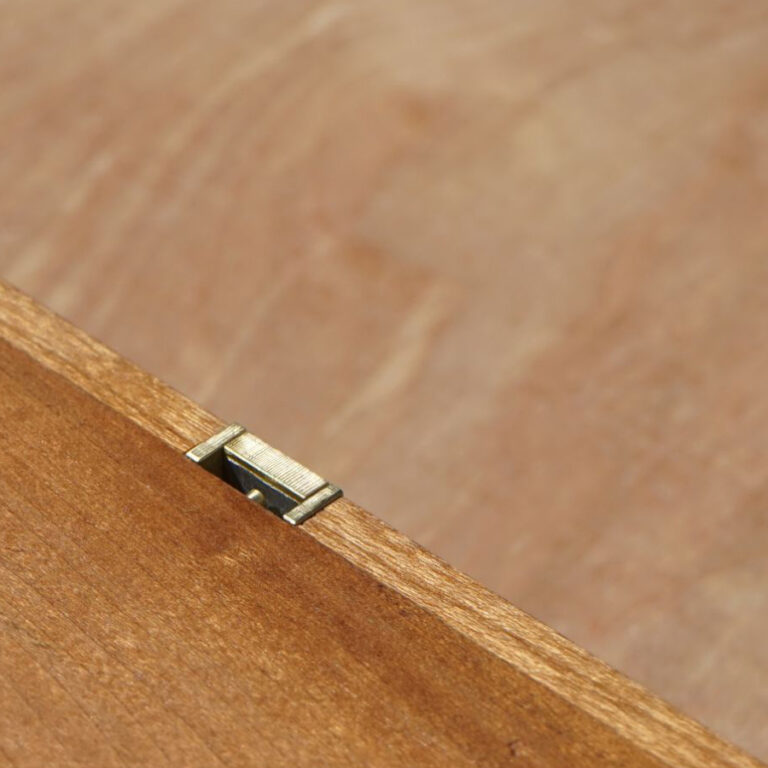
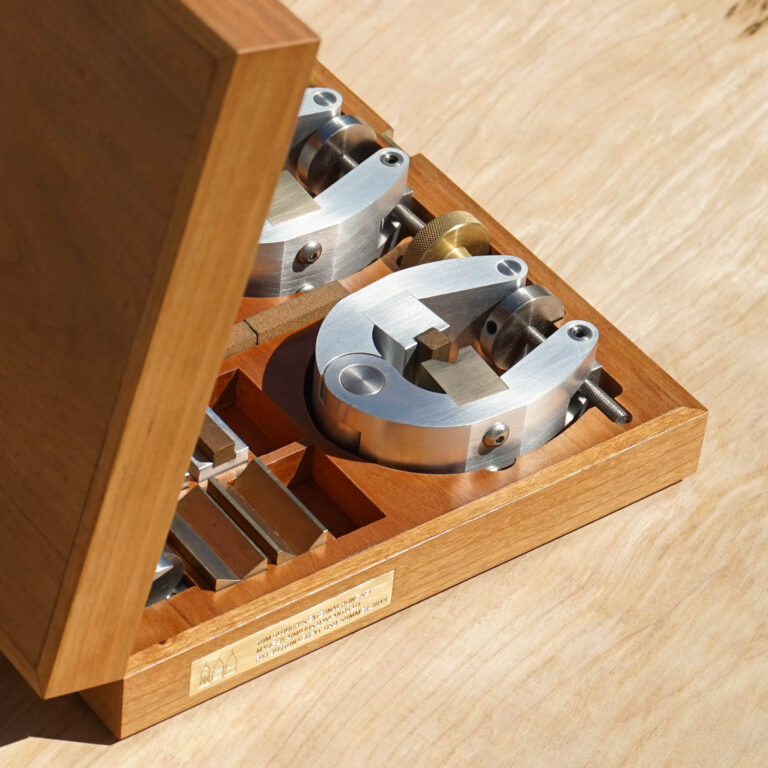
External Honing Kit
Inspired by Tom Blough’s honing kit design, this tool clamps the outside surface of a rotating cylindrical metal part and hones/polishes it without compromising its roundness and straightness. The kit includes a set of three hones so that one can switch among three different grits of abrasive stones during one operation. The case houses extra stones, a stone re-grind fixture, and a custom Allen wrench set.
For Burton Legeyt GSD.
Year: 2021
Material: Aluminium · Steel · Bronze · Brass · Abrasives · Cherry Box
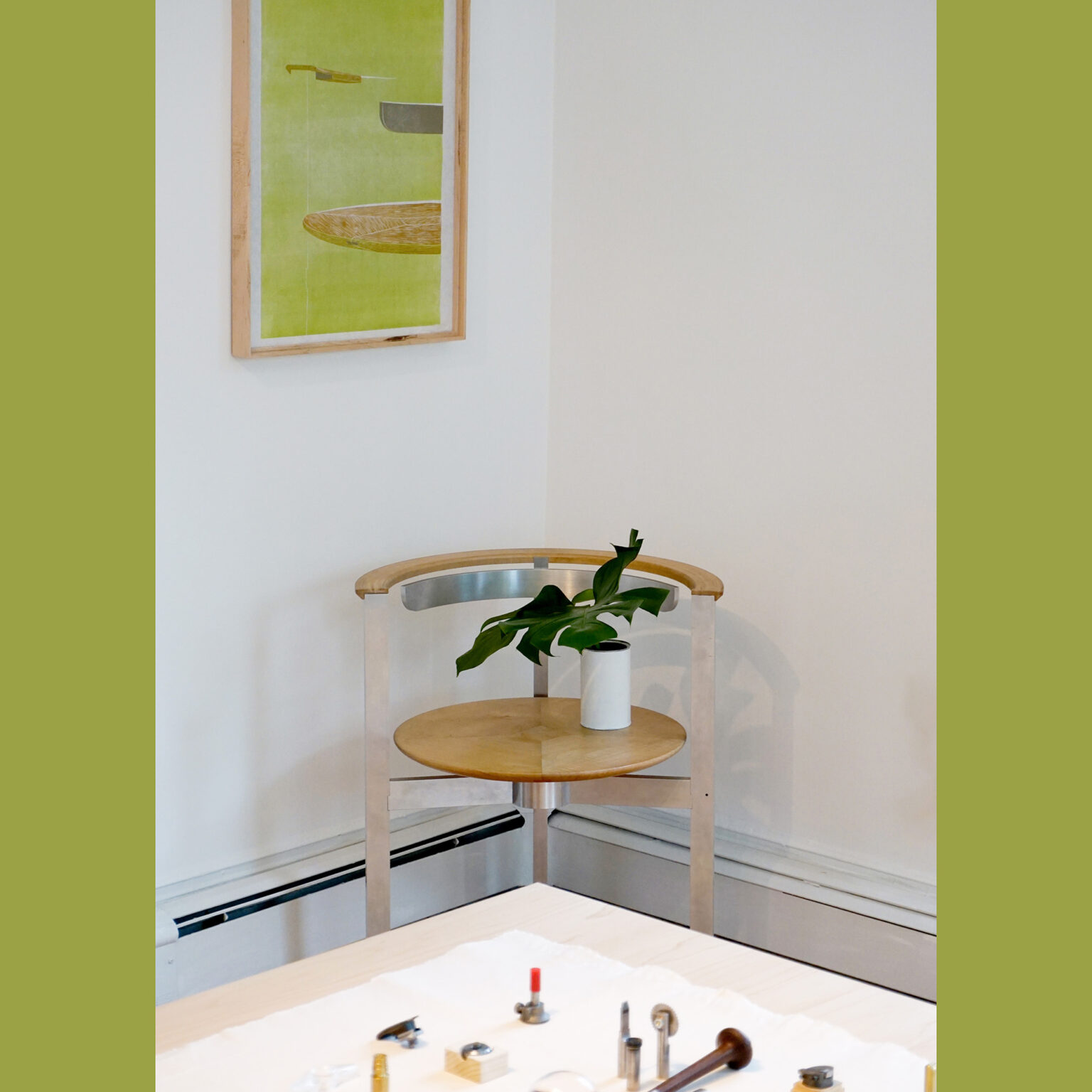
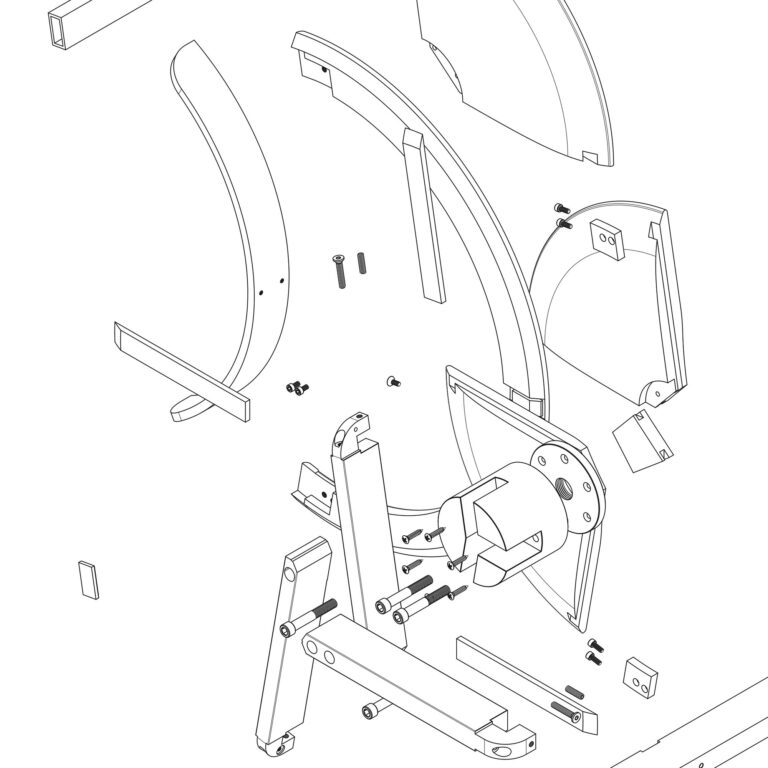
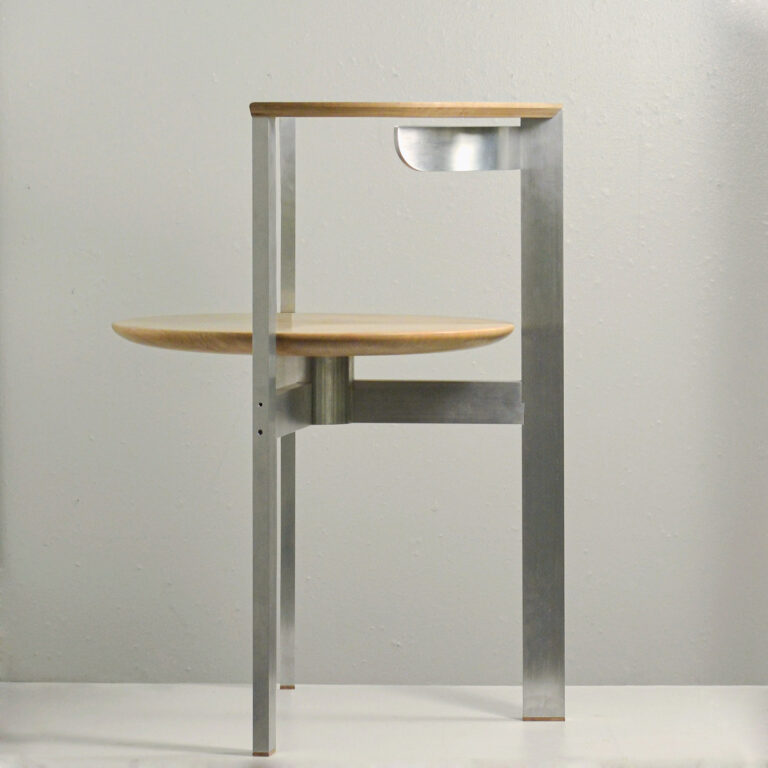
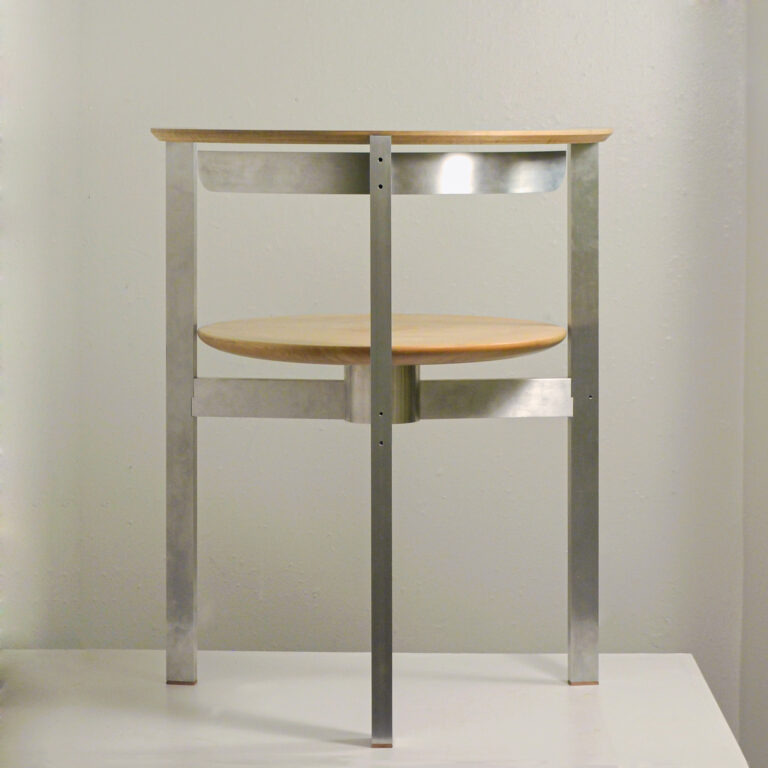
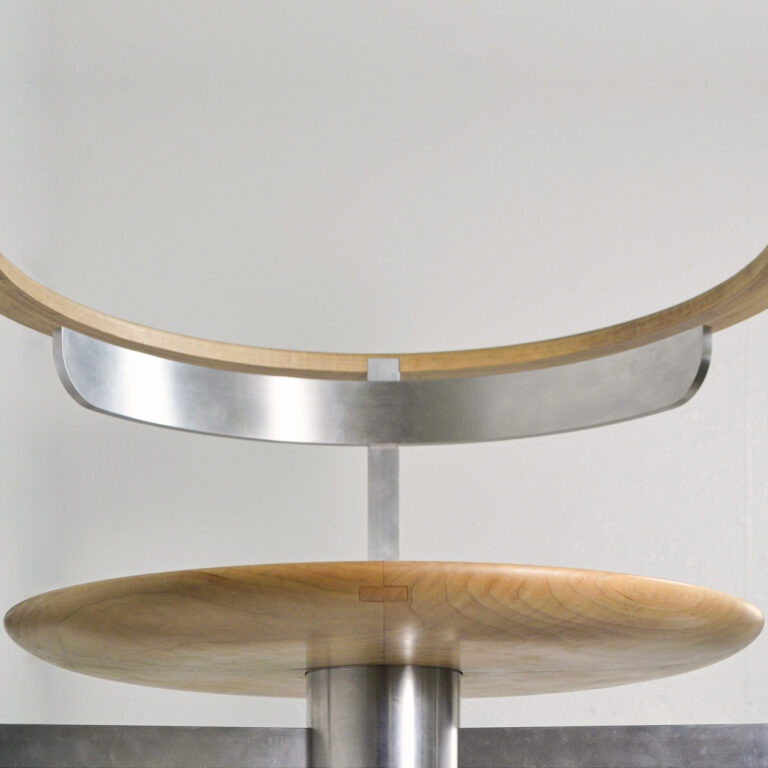
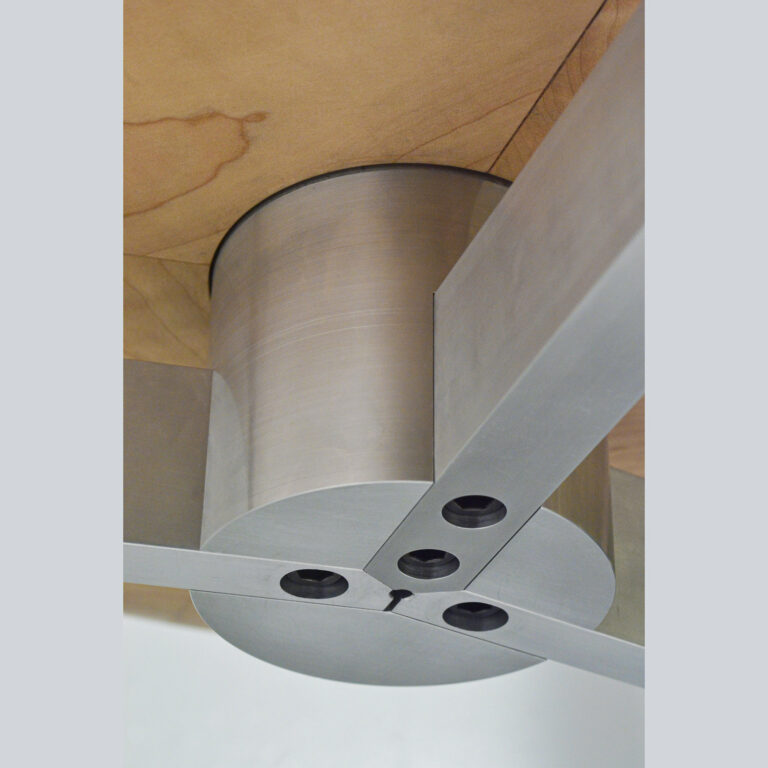
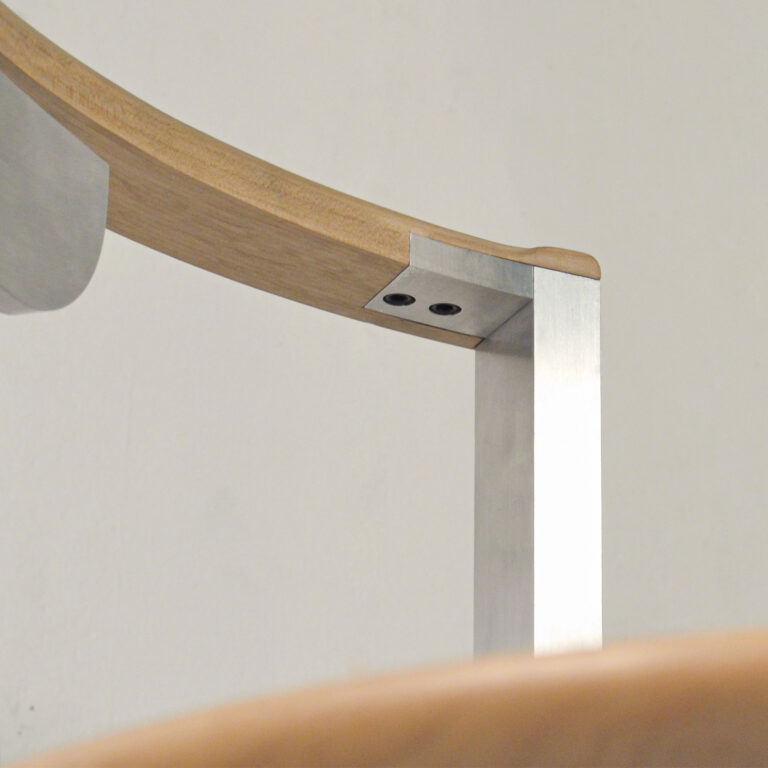

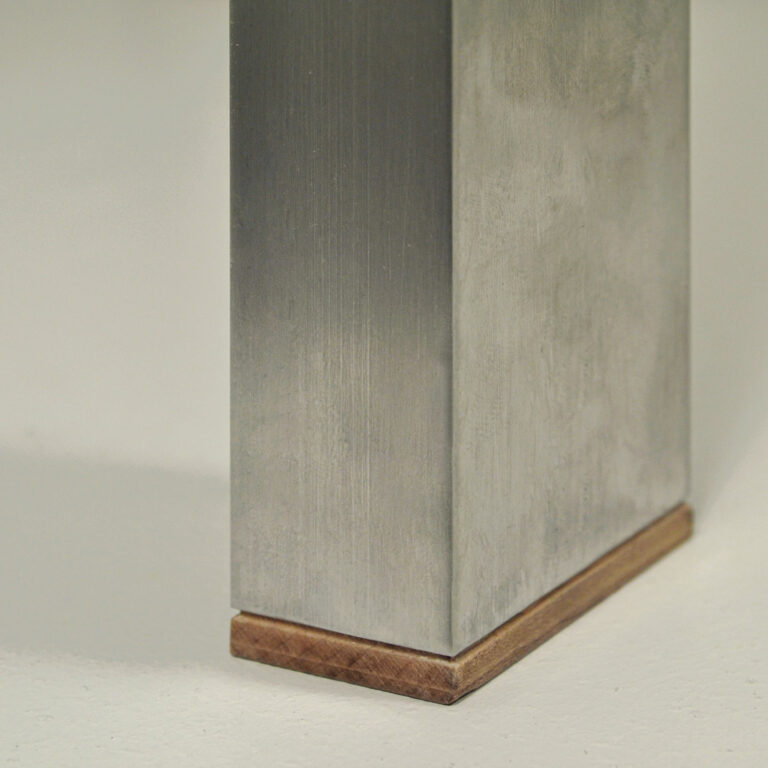
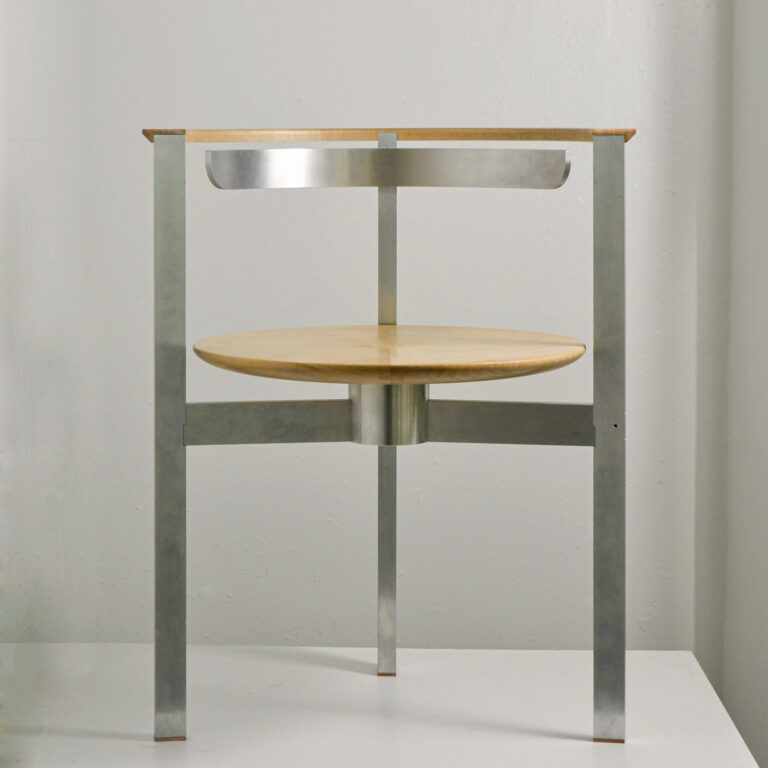
Joints of a Chair
A Part is an independent element that carries its own material and formal properties. Despite having its own autonomy, a Part can be assembled into a larger whole.
A Joint is a connecting mechanism between Parts. There are two kinds of joints in the built ennvironement: joints that are permanent and joints that require third-party elements, such as standardised dismountable hardware. Often, the joint is considered secondary to the overall form or parts.
The design of a chair posits a different logic in which the joints and the parts are not exclusive to each other. Joints do not simply connect parts; they become the generator of parts and, therefore, of form. In this logic, they are not secondary but can inform design, construction, and function.
Year: 2016
Material: Aluminium · Canadian Maple · Stainless Steel
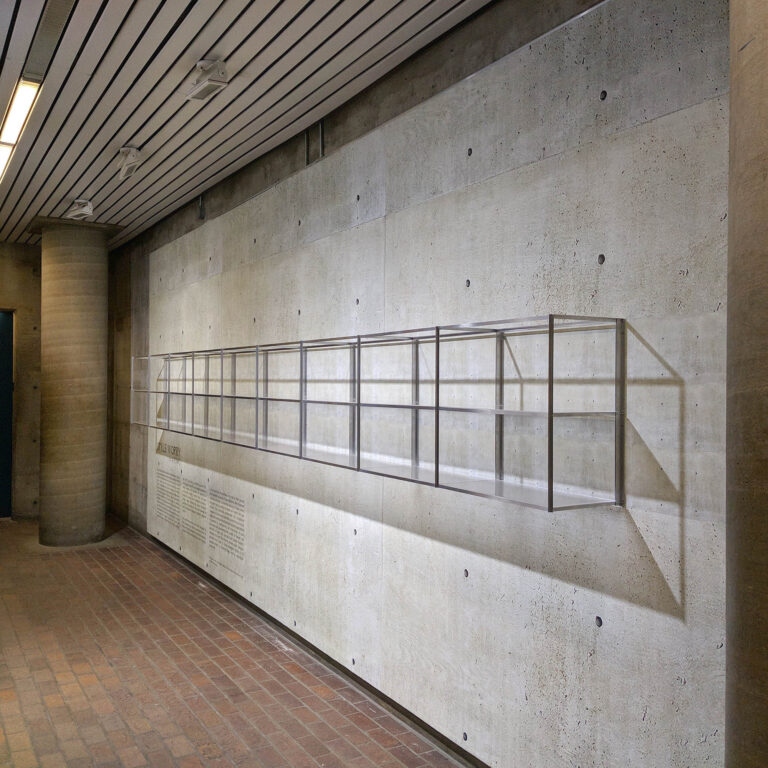
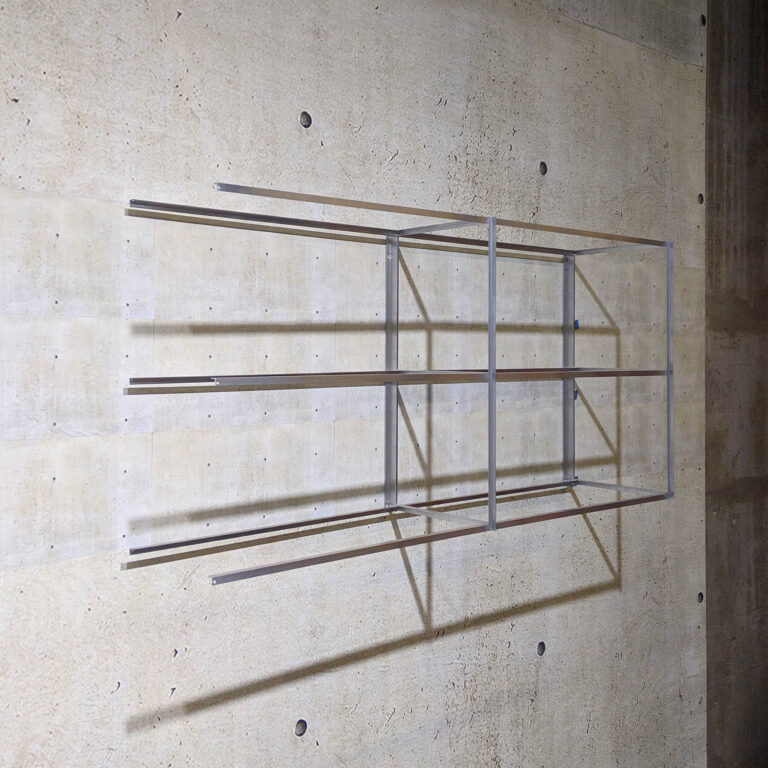
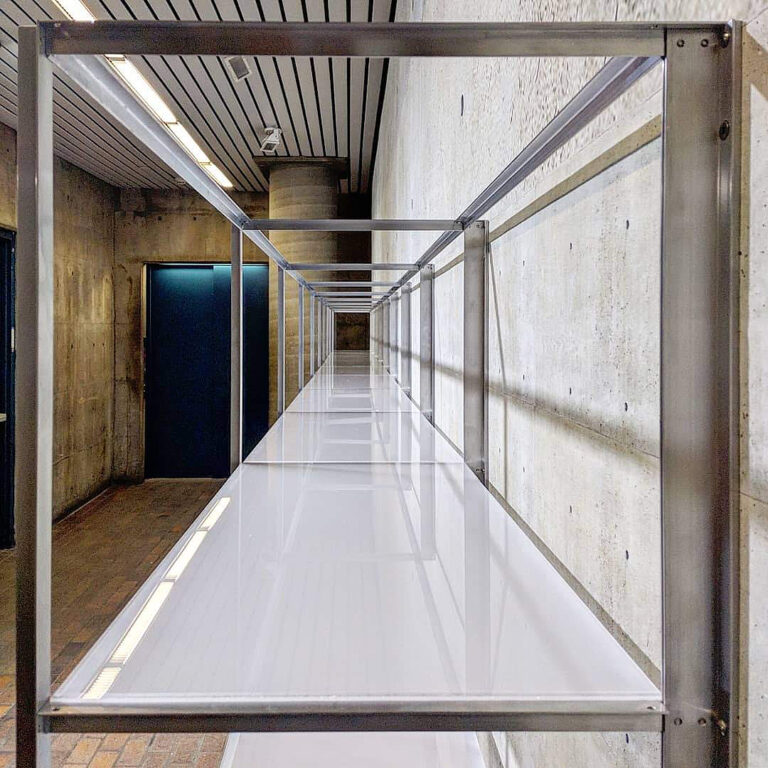
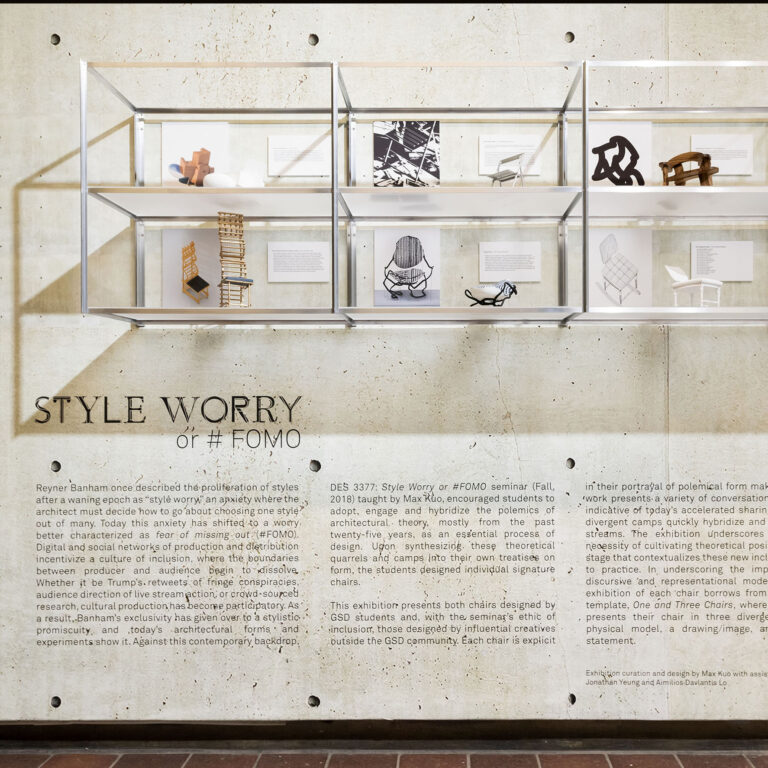
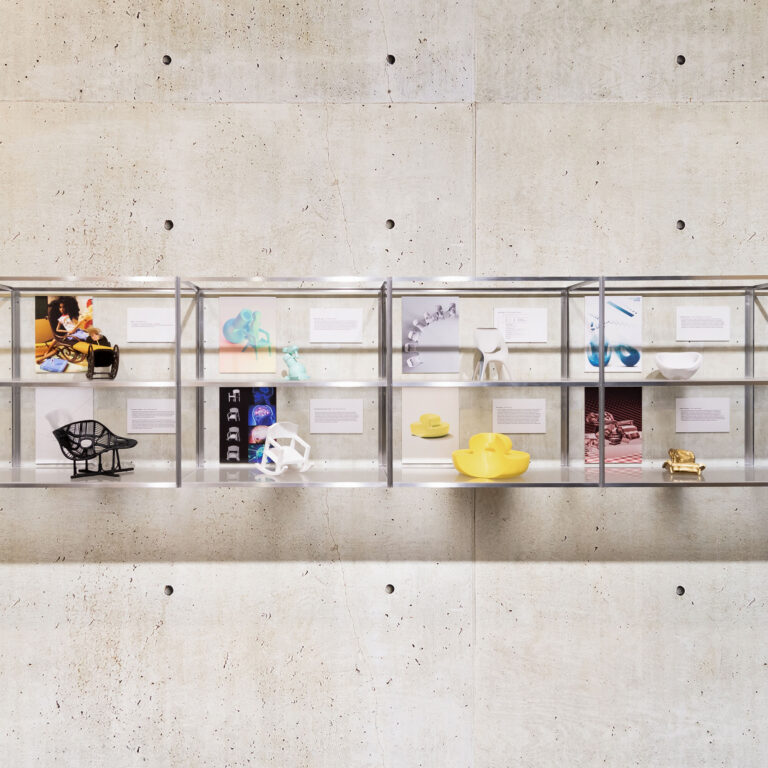
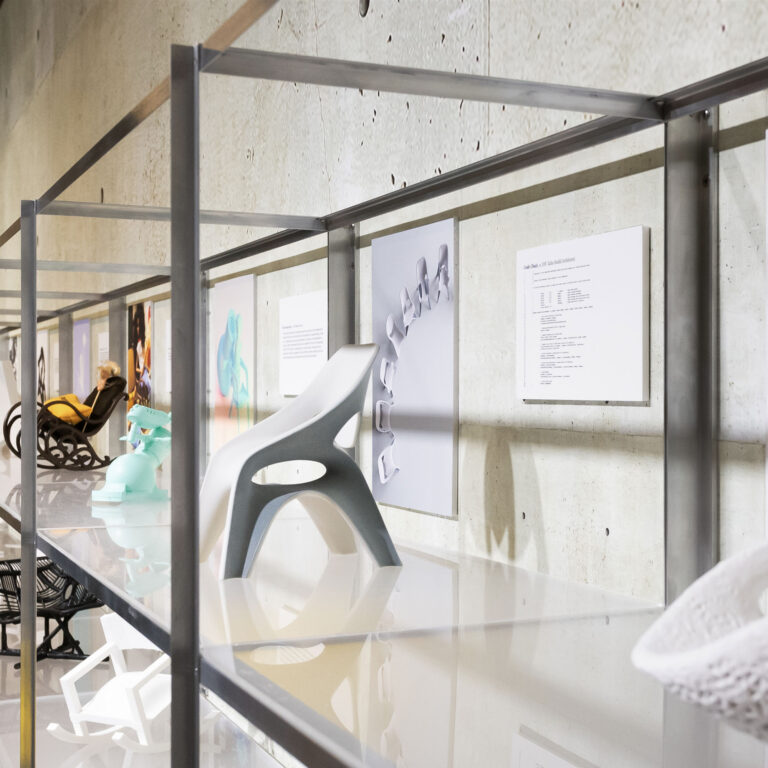
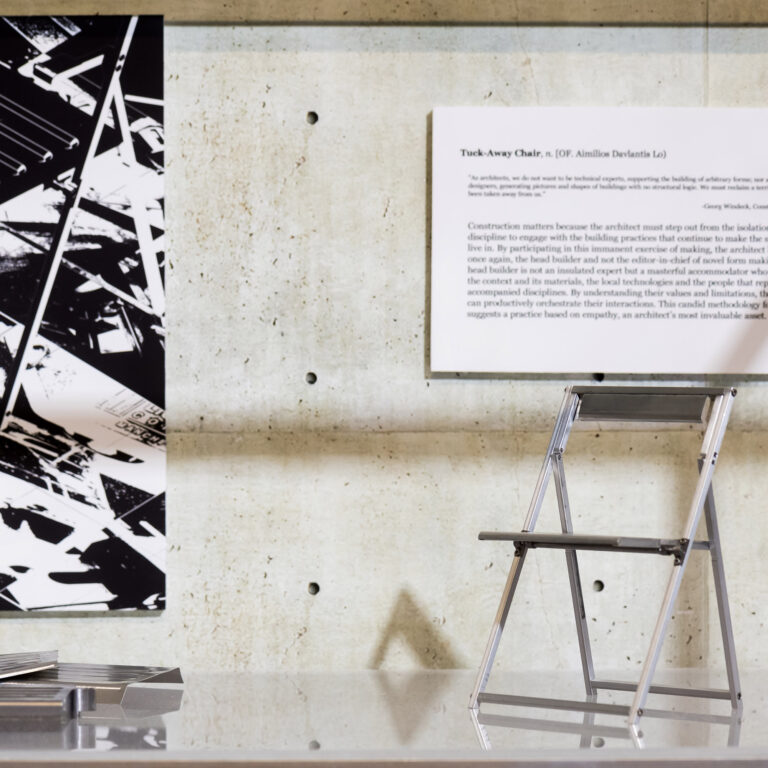
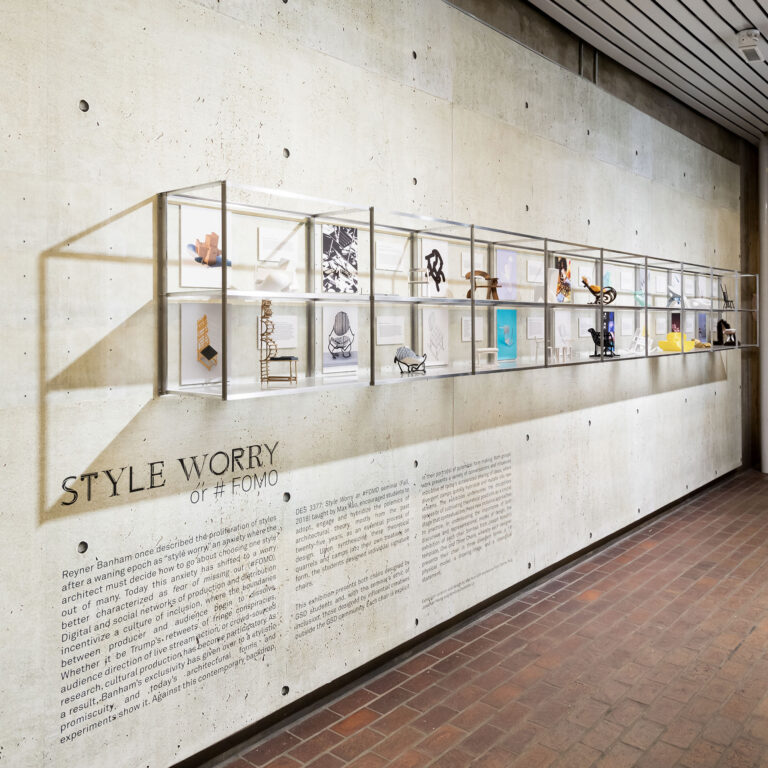
Exhibition Shelving
Modular light-weight display shelving for “Style Worry” exhibition at Harvard Graduate School of Design.
9-Module / 2-Tier Unit Dimensions:
18 feet long (550 cm)
2 feet tall (60 cm)
1 foot deep (30 cm)
Flat packs in a box
24 x 12 x 8 inches (60 x 30 x 20 cm)
Year: 2019
Material: Aluminium · Stainless Steel · Acrylic
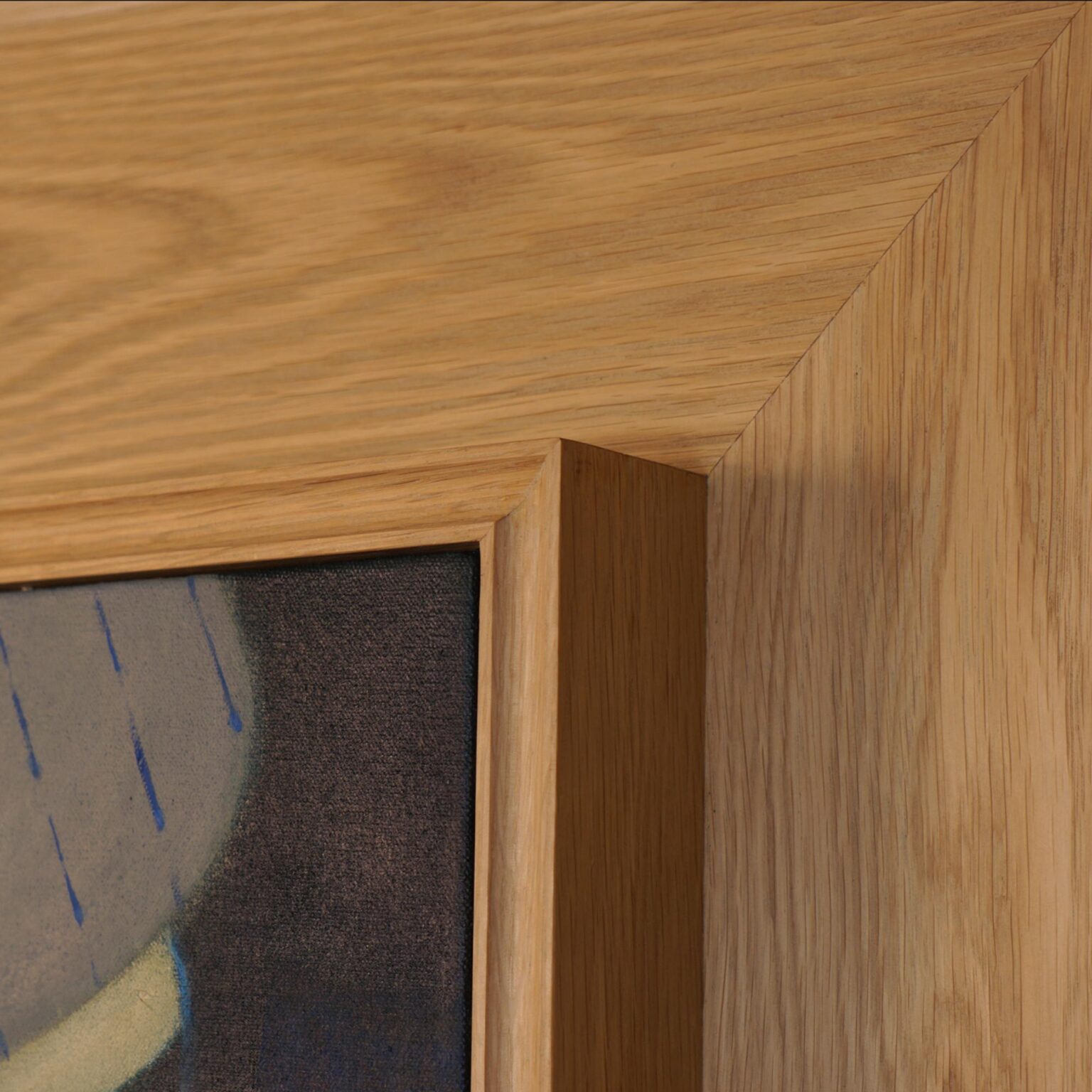
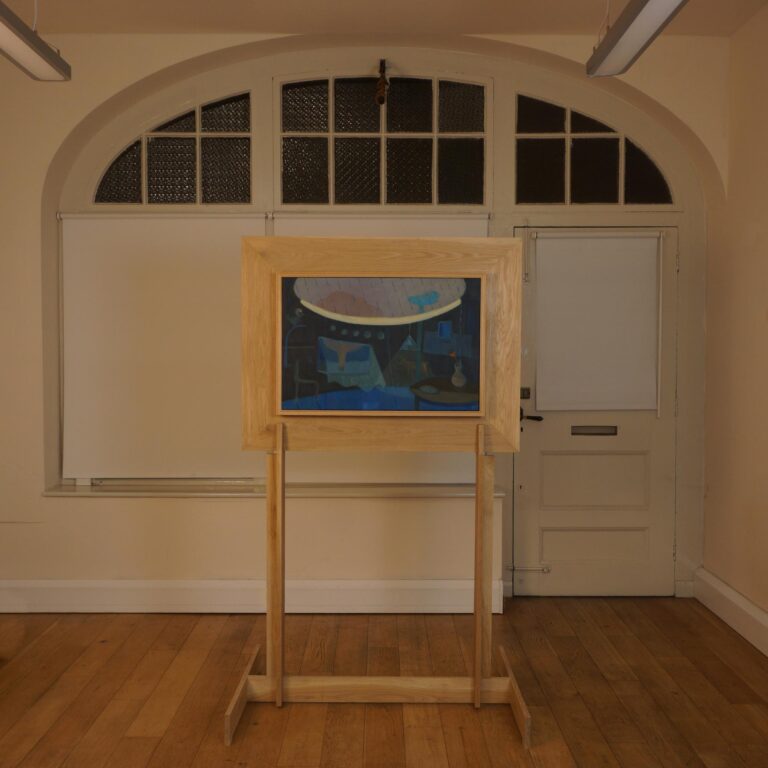
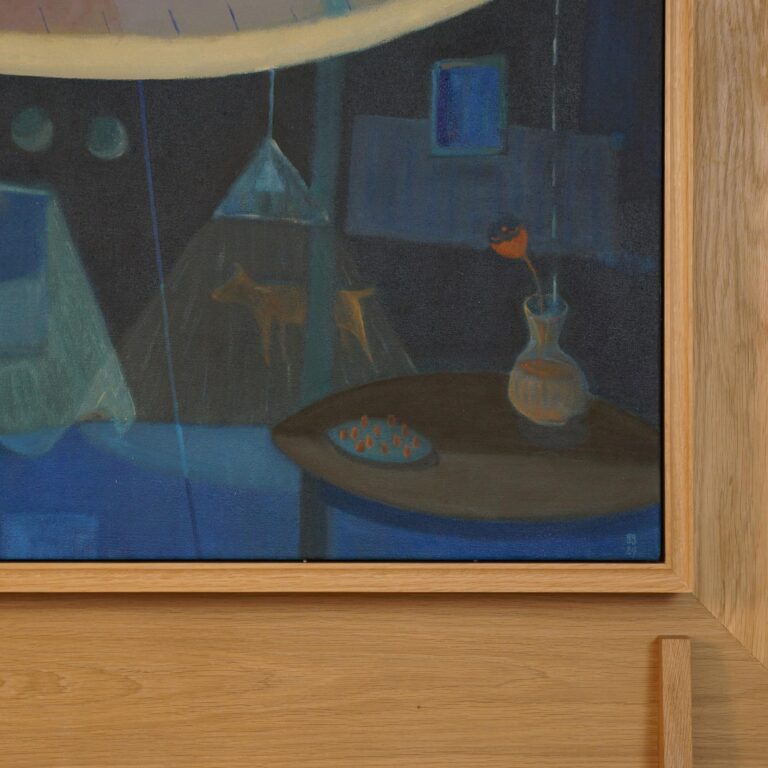

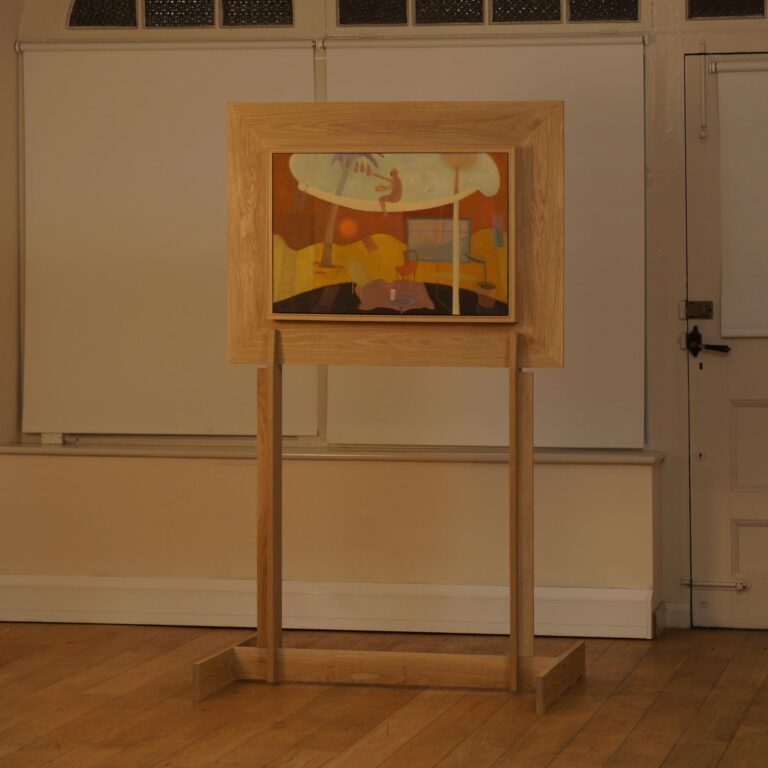
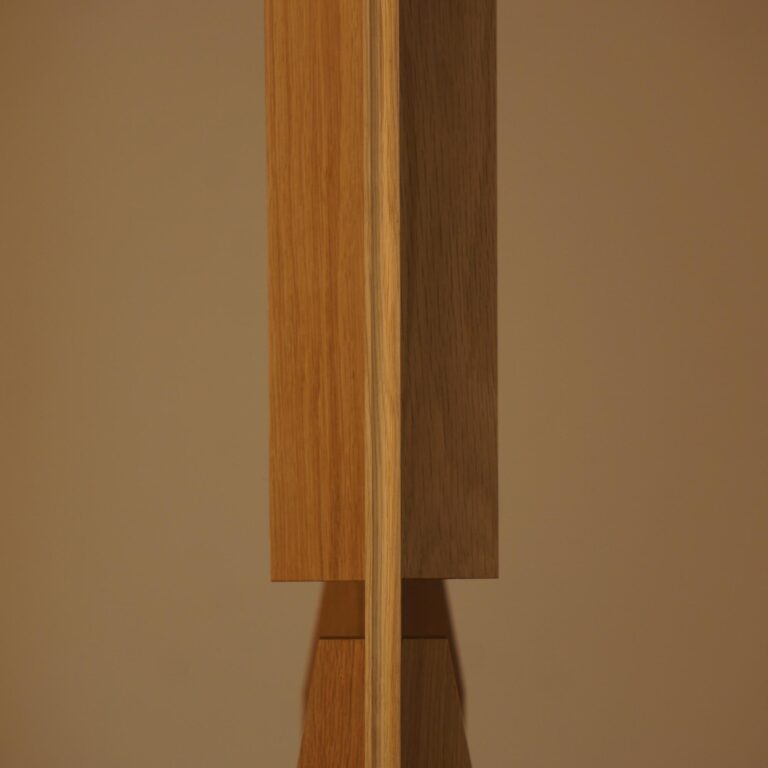
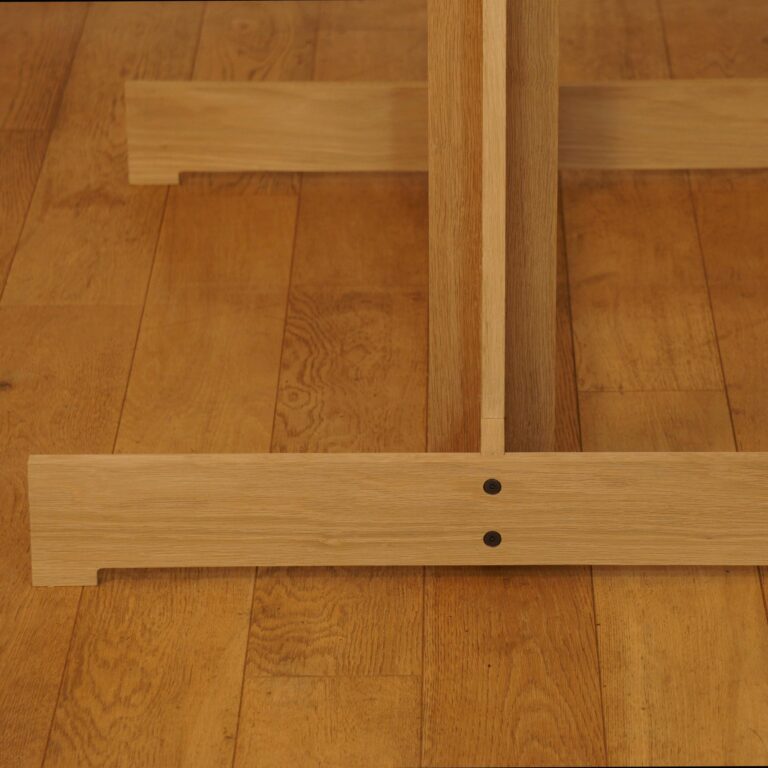
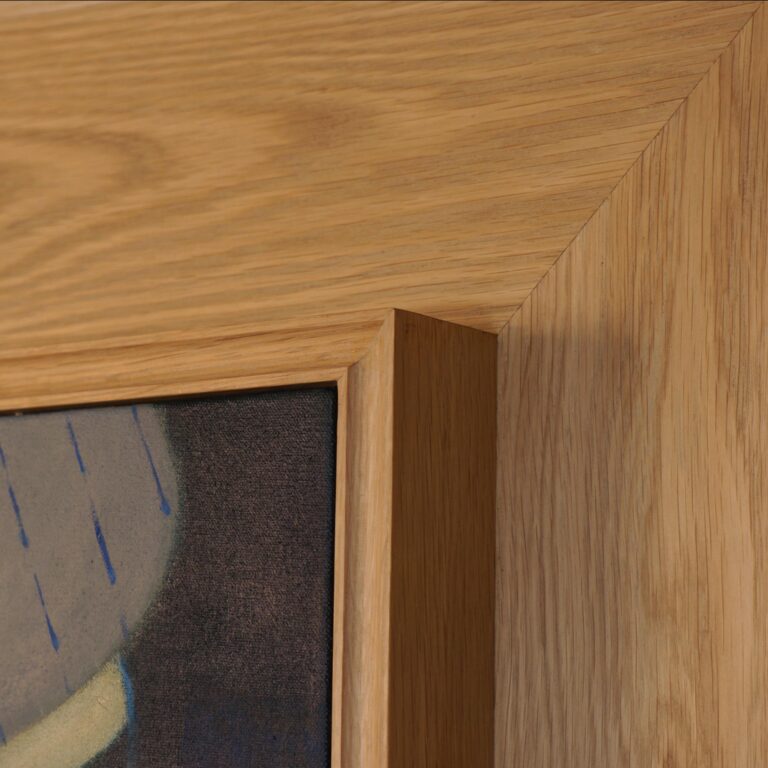

Exhibition Shelving
A double-sided painting stand for Yuqiao Guo’s luminous day and night paintings commissioned by Civil Architecture for the Doha Design Biennial 2024.
The solid oak stand was designed to pack flat in a shipping crate not much larger than the paintings.
Year: 2024
Material: Oak · Steel Hardware
